
DREAMS VOL 10, ISSUE 1 | SPRING 2024
When I was a child I wanted to be a chef, a nurse, a mother, a bike instructor, and many other occupations I’m sure I don't remember I, like many children, would play pretend and have imaginary friends. And then one day that ended. Real life smacked me in the face and dreaming wasn’t practical, it wasn’t efficient, it wasn’t a good use of my time. Or so my mind told me.
When I met my now fiancè, Zach, he was shocked when I told him I never had dreams in my sleep, and if I did have a dream, it was bad and nightmare-like, and I rarely remembered them. Meanwhile, he dreams every single time he sleeps, even during a short nap. His mind is always racing with the “what could be” and the imaginary.
I’ve never really considered myself a dreamer, someone who had huge goals and chased after them. But I looked up one day and realized that I really am living my dream. My “dream” job was an attainable one, it was really just to do what I love, nothing too specific. I’ve always had “safe” dreams for my life, goals I felt I could reach and accomplish. In college I wanted to reach the goal working in publishing, pursuing photography as a career, and even more than that, deeply rooting myself in a community who cares for me, walks with me, and feels like home.
When I stepped into this new role at Our Jackson Home in January, I had thoughts of what my “dream” job would look like (which is what I consider this job here). I thought it would be easy, I thought it wouldn’t be challenging to find motivation to get out of bed and come to work every day. After day one, I quickly learned that this might be one of the most challenging jobs I’ll ever have. Yet, it’s still the dream. Dreams are hard, sometimes the process of accomplishing them isn’t pretty, sometimes it involves lots of tears, sometimes it doesn’t look dreamy at all. But this is how the imaginary becomes reality. It’s painful, it might look different than we imagined, it might go in a completely different direction, but that doesn’t make it any less of a dream.
In brainstorming for this journal, I was challenged to imagine dreams that are intangible and may never be accomplished. It brought me back to my childlike thinking of imagination and unrealistic thinking. I hope the pages and stories of this journal fill you with childlike wonder and imagination. I hope you think about the dreams you may or may not accomplish, and I hope you see that it’s okay to dream in ways that challenge your thinking and help you pursue what you’re called to.
MADDIE STEELE, EDITOR-IN-CHIEF

Editor’s Note
James
Lizzie
Anna
Trista
Lily
Maddie

Hannah
Dana
EDITORIAL BOARD PROGRAM DIRECTOR Lizzie Emmons EDITOR-IN-CHIEF DESIGNER Maddie Steele COPY EDITOR Esther Jones POETRY ILLLUSTRATOR Callie Wright CONTACT WEBSITE & BLOG ourjacksonhome.com PHONE & EMAIL 731.554.5555 ourjacksonhomeinfo@gmail.com ADDRESS 541 Wiley Parker Road Jackson, TN 38305 A PUBLICATION OF OUR JACKSON HOME VOL. 10, ISSUE 1: DREAMS BROUGHT TO YOU BY THECO | WWW.ATTHECO.COM FEATURED PHOTOGRAPHERS
Atwater Mirza Babic
Griffith
Trunetta
Cari
Gore
Mann
Steele CONTRIBUTORS FEATURED WRITERS
Archer
Maddie
Eric
E. Cherry
Emmons
Esquivel
Gabe Hart
Havner
K.
Lewis
Steele
Welborn dreams.
noun, a cherished aspiration, ambition, or
and sensations occurring in a person's mind during sleep.
Bethany
/drēm/
ideal; images,

CONTENTS
6/STORY
Context And Connection
Trista Havner
13/STORY
Our Calling Is To Come Alive
Lily K. Lewis
19/STORY
The Downtown Tavern
Gabe Hart
26/POEM
Dreams of My Father
James E. Cherry
28/SPONSOR SPOTLIGHT
Jackson Energy Authority
32/STORY
Propelling Community Through Dreams
Maddie Steele
40/ESSAY
Grown-Ups, Tomatoes, and Magic Pocket Lint
Eric Archer
44/STORY
An Unexpected Belly Laugh
Bethany Welborn
51/STORY
Restoring Women's Dreams
Lizzie Emmons
56/STORY
A New American Dream
Anna Esquivel
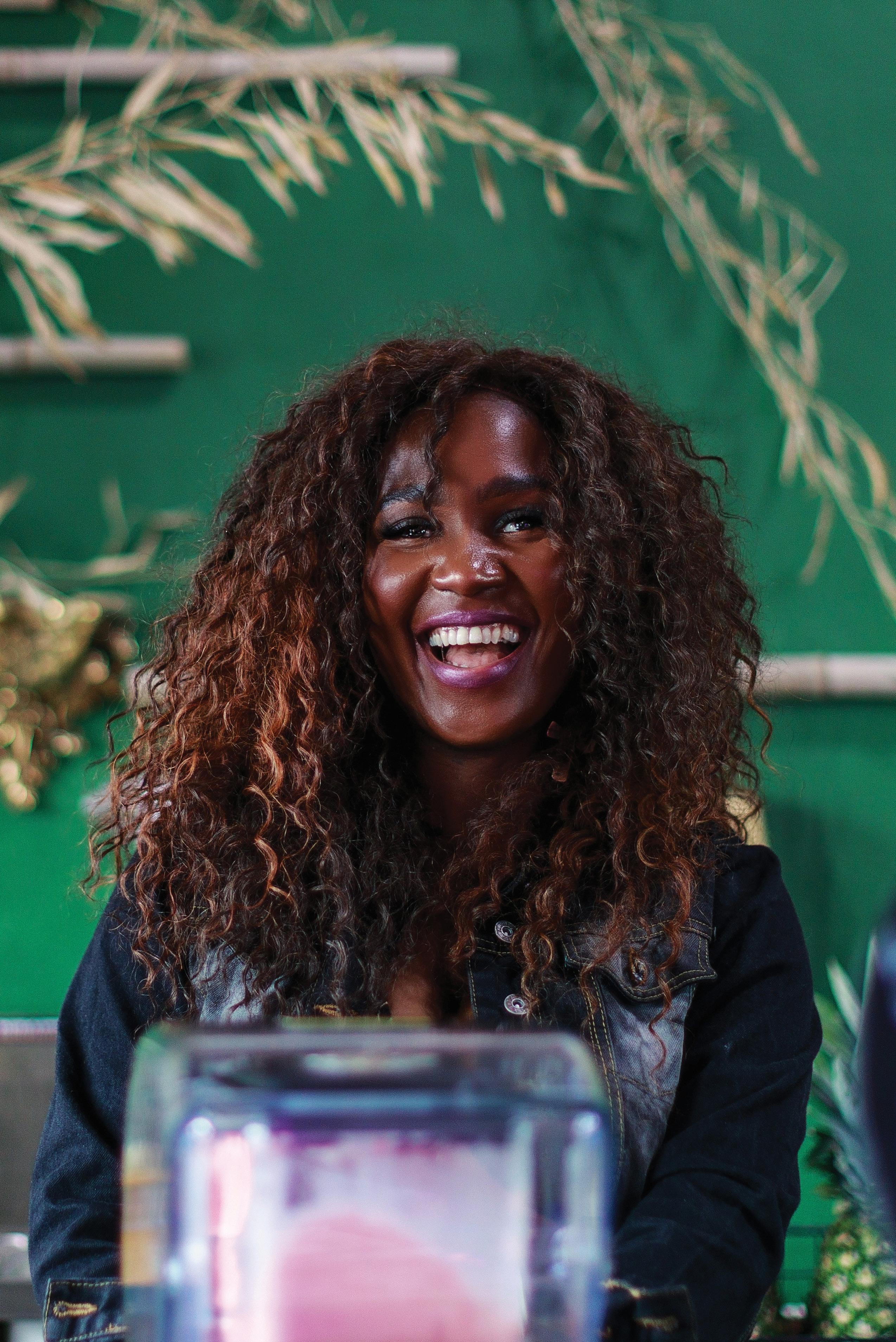
6 • OUR JACKSON HOME
CONTEXT CONNECTION & Crystal Brown
STORY BY TRISTA HAVNER
PHOTOS BY TRUNETTA ATWATER
Long before there was a gallery to curate, babies to raise, classrooms full of students to inspire, courses to pass, miles on the pavement to log, or basketballs to bounce, for little Trista, there were books to read. As a little girl, I would lose myself in stories for hours, becoming a part of the world I was immersed in for the day. I sympathized with the plight of Ramona, solved mysteries with Nancy, languished over injustices in Maycomb, Alabama. So much of the timeline of my childhood revolves around what I was reading at the time. As a college student exploring what that meant for me (especially because I was determined to teach literature and inspire young minds to love a good story as much as I did), I assumed that escape from reality was a big part of the equation, but as an older adult, I have come to know better. Escape is a fleeting byproduct of a good story, but the part that sticks, what keeps drawing me in time and time again, is understanding context. Knowing a character from start to finish and watching them be absorbed into or resist their circumstances is what makes a story worth knowing.
As I have grown in my understanding of people and reallife characters, I have found just how
important context is for understanding and for empathy and for community. And when people are willing to share their context and allow you the gift of understanding, that is where real connection happens.
I got to experience one of those contextual connections last week with a woman I have admired from afar. I knew about Crystal Brown. I had read about her vegan offerings at Crystal’s Zen and Juice, I listened to her speak at the first Royal Reclamation, I picked up on the amount of respect that was associated with her person. She is one of those women whose presence is felt before she even says a word. Going into my interview with her, I knew I was going to be acquainted with a powerful woman. And I was absolutely right. But sitting with her in the beautiful space she has created at the depot on Royal Street, I was reminded of how much context matters.
Crystal is a West Tennessee product, raised by an aunt and her husband in Denmark, Tennessee. She grew up fairly isolated from community, and when she was brought to live with her mother as a sixteen-year-old she found herself feeling overwhelmed in social settings. She attended three different high schools before finally
VOL. 10, ISSUE 1: DREAMS • 7



8 • OUR JACKSON HOME
unenrolling and homeschooling herself, as school presented plentiful opportunities for anxiety. Crystal was in a relationship that she hoped would eventually lead to marriage and a family, but she found herself pregnant and single with few resources. After struggling as a single mother for a few years, and under the advisement of family and friends, she decided to join the Army and capitalize on the resources she could gain there.
After serving a tour in Afghanistan, Crystal returned home to severe PTSD and crippling anxiety and panic attacks, which she believes triggered stored trauma from her early life. As we sat and talked about the extent of the effects on her mental health, the word “debilitating” kept cropping up. She could not hold down a job and even felt extremely anxious around her closest family and friends.
therapy, so she began the journey of holistic healing, including breathwork and yoga and sketch journaling. She began to post some of her sketches on Snapchat, and because of her natural artistic abilities, people began asking her to sketch things for them and her commission work blew up. She decided to quit her corporate job and pursue art full time. She hosted art parties and shows and sold her art. In addition to journaling, Crystal began to research the impact of diet on mental health
"I was overwhelmed by what a kindness this offering is to our Shecommunity. is offering the same healing that she has worked so hard to achieve."
Knowing she needed healing, she began attending therapy through Veterans Affairs with Karen Roberts, who Crystal highly regards as a godsend.
Crystal started with talk therapy and began to heal but was still struggling with crippling panic attacks and anxiety. Her therapist suggested medication to help dampen the toll of living in a constant state of worry, but Crystal, while fully understanding how beneficial medication can be for anxiety, refused because her “soul knew it (medication) was not my path.” But she needed to do something beyond talk
And as I sat with Crystal, I started to connect the dots of her story. She is an intentional woman, and her healing journey has been thoughtful and deliberate.
Holistic healing completely changed the course of Crystal’s journey. In a particularly impactful therapy session, Crystal was talking about a vision she had for a vegan cafe that offered a space for reflection and connection, where she could host sound meditations and art classes. As she laid out the vision, her therapist told her that she could see it being realized in the next five years. In 2023, nearly five years after that therapy session, Crystal made her way back to Jackson and launched Crystal’s Zen and Juice, a vegan cafe and art lounge that offers smoothies and cold-pressed juices and a place to just be. Listening to Crystal talk about how her healing journey led her to this place, I was overwhelmed by what a kindness this offering is to our community. She is offering the same healing that she has worked so hard to achieve.
VOL. 10, ISSUE 1: DREAMS • 9
"It is easy to celebrate a win with someone who has created something that matters to us. But when we can see the timeline and the cost and the healing that has powered the successes that we enjoy, the appreciation is deep and rich."
As I was wrapping up my interview with Crystal and she had so patiently and honestly answered my questions, I began to think about how important knowing Crystal’s context and past was to understanding her present. My last question centered around dreams, and I specifically wanted to hear her personal dreams and her dreams for our community. Crystal would love to have Crystal’s Zen and Juice operating in such a way that she can relieve herself of the tedious tasks of running the business day to day. Currently, Crystal prepares every single item from scratch, by herself, every day. Ideally, she would hand over those responsibilities, while maintaining the same quality, and take on more of a visionary role.
As a small business owner myself, I know that is a dream that is no small feat. As far as her dreams for our community, Crystal gazed out the window of the depot and pointed to the mural on the building across the street, a mural she looks at every single day of people going about their lives, eating together and doing business together and sharing experiences. Connected and thriving because of each other and not in spite of each other. And in so many ways Crystal can see that connectivity happening now — small businesses cropping up downtown and all along Royal Street that complement each other, people being “consistent in their calling” to do the work of creating
space for community and healing. What better woman to represent that dream than Crystal Brown.
Here’s the thing — dreams, healing. They are not free. Dreams cost us something, and we don’t get to a place of realization of a vision without hard work and sacrificing time and resources and vulnerability. That is why context is so critically important. It is easy to celebrate a win with someone who has created something that matters to us. But when we can see the timeline and the cost and the healing that has powered the successes that we enjoy, the appreciation is deep and rich. Sitting across from Crystal Brown in the beautiful space she has created without context of her past would have been enough to make me appreciate her realized dream, but having even a limited understanding of what this space cost her and the mental and emotional hard work of healing that led to the feeling in my chest just being in her presence and her space — that is the stuff that real connectivity is borne of. And that character development, from anxiety-riddled young mother to Army veteran to therapy-going young adult to a woman in search of healing to the dazzling woman sitting across from me on an unseasonably warm February Monday — that is a story worth knowing.
10 • OUR JACKSON HOME

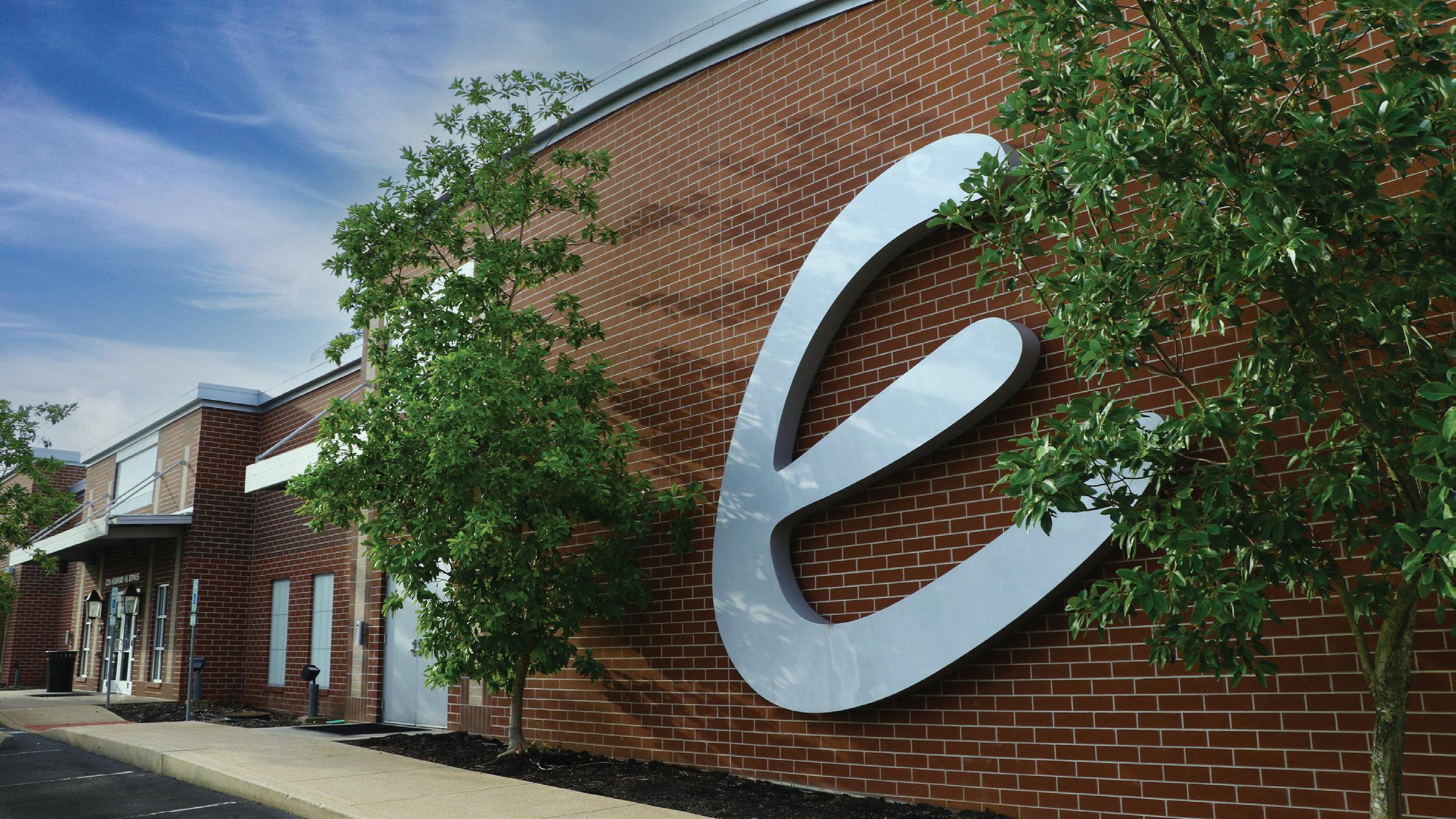
DEDICATED TO SERVICE. COMMITTED TO COMMUNITY. Jackson Energy Authority is an equal opportunity employer. 731.422.7500 ELECTRICITY | GAS | WATER WASTEWATER | BROADBAND Jackson Energy Authority is not just an average utility company, we are the community’s utility company. We’re made up of hundreds of employees not only dedicated to delivering the best in service but also committed to proudly serving this community. Transformations will continue to take place as the future of our community and utility industry shifts, but our dedication to service and commitment to community will remain one thing you can count on. www.jaxenergy.com 12 • OUR JACKSON HOME
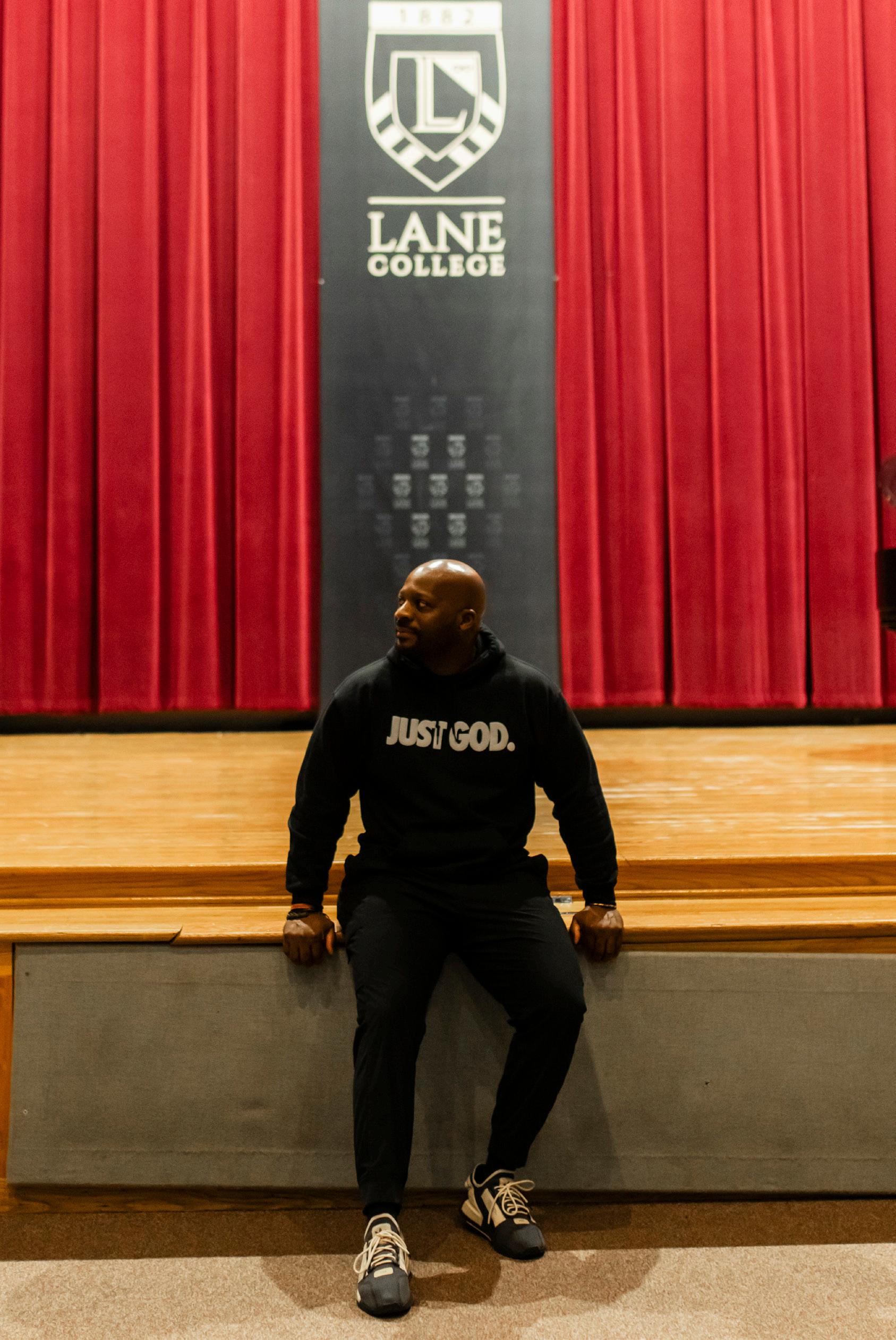
Our Calling Is To Come Alive
STORY BY LILY K. LEWIS PHOTOS BY MADDIE STEELE
VOL. 10, ISSUE 1: DREAMS • 13
FREEMAN MCKINDRA
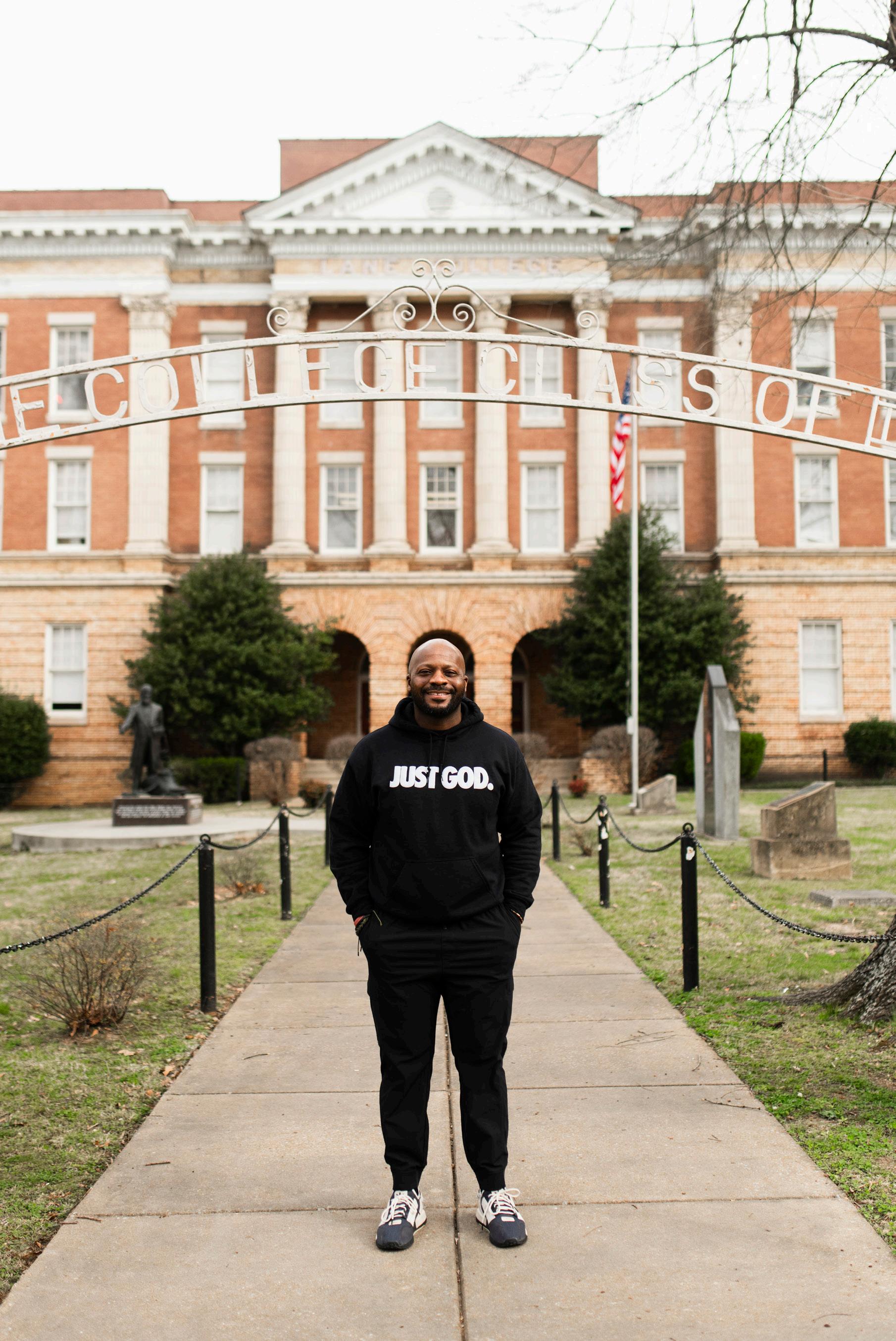
14 • OUR JACKSON HOME
Before the interview even began, only minutes after meeting Freeman McKindra, I knew he was an incredibly kind and wellrespected man on Lane College’s campus. While he posed for photos in front of Lane’s gorgeous old buildings, he greeted each student he passed by name and exchanged a greeting or joke specific to them. He laughed easily, and it was evident that he loved each student, and the college, as a whole, deeply.
I think this might be the only interview I’ve ever conducted where I didn’t have to ask a single question. As soon as we sat down, I was immediately drawn into his story. McKindra worked as a preacher for a period of time before he realized that he was more passionate about the people of the church than the institution of the church. He became increasingly frustrated by the idea that the church was intended to help people, but there were limits to what it could accomplish as an institution. He decided to resign from being a full-time pastor in order to invest in the people around him more. It was his calling; it was where he found his value. He knew that quitting his job would mean losing his income, but chuckling, he said, “Walmart is always hiring.”
While it took a leap of faith and humility to follow his calling, it has led to the life of service he now has at Lane College. After he quit working as a pastor, he received a call from a bishop who had mentored
McKindra and who worked at Lane College. He was asked to apply for two positions: Director of First Year Experience and Chaplain. McKindra interviewed for both, and after many discussions, ended up getting both jobs.
This was a new, hybrid position that had never been attempted before, but Lane believed that blending the responsibilities of both jobs could greatly benefit the students. As Director of First Year experience, he was tasked with helping students with zero to 30 credit hours navigate their classes and thrive while living independently for the first time. As Chaplain, it was his responsibility to advise the students interested in ministry and to lead services. The mix of these roles was intended to make students more comfortable: the same person who signed you up for classes would be the same person who could offer you advice about friends, family, and personal struggles.
Freeman McKindra is a man of great openness and intentionality. Even though it was his interview, he insisted on encouraging me to follow my unique callings, which left me feeling uplifted listening to his testimony.
He mentioned a quote from Howard Thurman that states, “Don’t ask what the world needs. Ask what makes you come alive, and go do it. Because what the world needs is people who have come alive.”
VOL. 10, ISSUE 1: DREAMS • 15


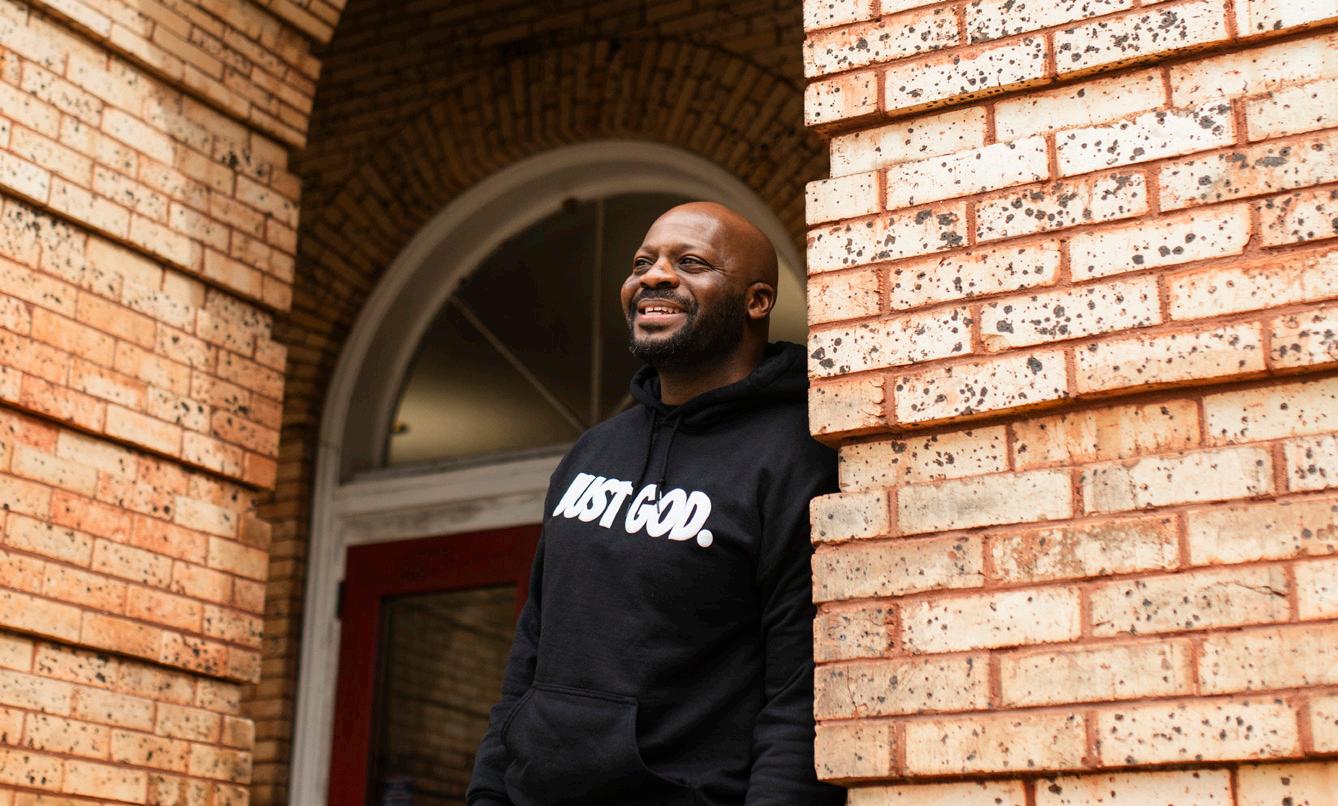
16 • OUR JACKSON HOME
Building off Thurman’s quote, McKindra implored, “Students are valued contributors to society; you just need them to come alive. If they do not, we are lesser because of it. Students come to Lane with many different backgrounds, and I must help them navigate the noise and expose them to new experiences to help them see.”
One of McKindra’s favorite parts of the First Year Experience at Lane is a trip to Florida with several of the students. Many of them have never even seen the beach before this trip, and McKindra confessed, “In seeing the ocean, I want them to understand the world is bigger than they can see.” Furthermore, he implores the students to venture past what is familiar in order to find their calling, their dreams.
McKindra passionately explained, “Faith and preaching are an art form, but the goal is to expose people to beauty. I hate to think we could live our lives and not know beauty: the beauty of God and how people navigate life’s challenges to find vulnerability and strength and joy.”
have an awareness of sacred spaces and to take advantage of these opportunities. The gym or school can be just as much of a sacred space as a sanctuary in a church. McKindra challenges us to “stay in the gym, in school, in church, in prayer, until you feel stronger,” and to dream vividly, because everyone has potential and everyone has a calling. Furthermore, he claimed, “When you find the thing you’re called to do,” he snapped his fingers, “the world is different.”
"Faith and preaching is an art form, but the goal is to expose people to beauty. I hate to think we could live our lives and not know beauty: the beauty of God and how people navigate life’s challenges to find vulnerability and strength and joy.”
Beauty can be found in many different places, just like callings and dreams, and it is important to
There is not a singular definition of success in McKindra’s eyes: all of his students have different backgrounds and different goals and different desires. But he explained that “success stories are a byproduct of being committed to your calling.” For some students that means graduating Lane to become a teacher, police officer, NFL player, or factory worker. For some, it means pursuing a career in the military or earning a graduate degree. For others, it can simply be setting a good example for their siblings. Freeman McKindra “looks forward to what Jackson will become when young people are giving energy to the city and the old guard is committed to maintaining meaningful history in Jackson.”
VOL. 10, ISSUE 1: DREAMS • 17

18 • OUR JACKSON HOME
TheDowntown Tavern
STORY BY GABE HART PHOTOS BY MIRZA BABIC
Where the Past Coalesces with the Present
It’s 3:00 on a cold and rainy February afternoon — two days before Valentine’s Day, to be exact. The rain is incessant, and parking is sparse on North Liberty Street in Downtown Jackson. I circle the block a few times before finding a vacancy on the east side of North Church Street, the rain still slanting in sheets. I sprint across North Church, cradling my computer between my bicep and forearm like a running back darting in and out of defenders.
I throttle down as I approach the front door, the unmistakable electric blue of the wooden sign marking my arrival. At this exact moment, a strange feeling hits me — a mixture of deja vu and a hazy dream, something real but not. An incandescent memory that’s more like a feeling. Maybe it’s both.
There was a time in my life when arriving at The Downtown Tavern at 3:00 on a weekday afternoon was normal. There were days when my friend Jon and I would wait on the wooden bench outside the bar until the owner, Molly Parker, showed up to open it. We’d take our seats in our usual spot (facing the door to see who came and went), wait for the rest of our group to arrive, and stay well past the light outside turned dark.
Today, though, I’m not here to drink; I’m here to have a conversation.
Because our memories like to pave over the potholes of reality, I don’t think of the hangovers that would be waiting for me the mornings after those afternoons turned into late nights. When I remember those times, it’s through a dream-like haze of smoke, bourbon, and live music, surrounded by friends and regulars. But the reality in which those dreams were formed isn’t as malleable as my memories are. The truth of what The Downtown Tavern was and is — from its closing to its reopening to finally being recognized as one of the best dive bars in the state — is a reality that is harsh, unforgiving, and fraught with challenges. That reality is why it takes someone tough as hell to keep it all going. Enter Melanie Lupino.
Melanie is no stranger to the bar scene in Jackson — and beyond.
“I was working at Cafe Lafayette when it burned down in July of 2004 and came straight to the Tavern for a job,” she recalled. “Stayed there for not even six months, went out with a bang, and got a job at Barley’s.”
Barley’s would eventually close, sending Melanie to the mountains in Denver to tend bar and eventually
VOL. 10, ISSUE 1: DREAMS • 19
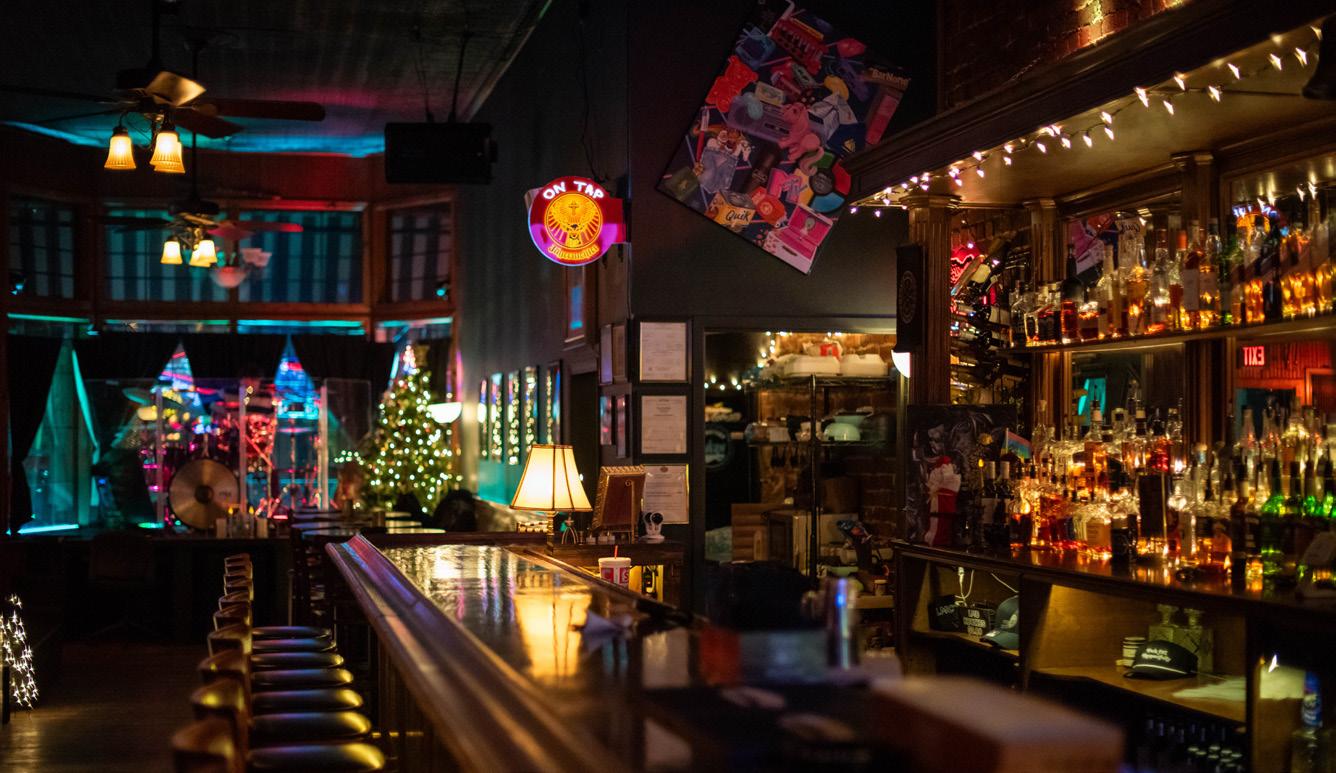
the southernmost point in the United States — Key West — a concrete foreshadowing of the highs and lows she would experience on the way to finally owning the Tavern and the building where the business has always called home. The irony of all of it, though, is that owning any bar wasn’t ever Melanie’s dream.
“When my Barley’s days were winding down, I made it a point to tell anyone who would listen that I would never own a bar,” she recalled.
Time and life have their own ways of changing our plans.
Despite Melanie’s declaration, she bought The Downtown Tavern near the end of 2019, not knowing that the world would be turned upside down a few months later.
The beginnings of things always hold the most promise — the dreams, the aspirations, the hopes, all an oasis from the drudgery of the mundane. But the work to make those dreams a reality? Well, that’s where this story gets real.
To anyone who has had the privilege of enjoying a drink or two on North Liberty Street, the Tavern’s building and business are inseparable.
The aesthetics of the building are just as crucial to the brand as the name itself. The high ceilings, dim lights, and backlit bar paint the full picture of what makes The Downtown Tavern the most unique bar in West Tennessee, but the building and the brand weren’t always under the same ownership.
As long as the Tavern existed, whoever owned the business had to rent the building. Over the course of two decades, the Tavern has survived changes in ownership, literal fences being built to keep patrons off the patio, and developers from near and far who have tried to pull the rug out from under ownership by attempting to buy the building. But owning the building wasn’t even on Melanie’s radar when she purchased the business. There was too much work to do to think that far ahead.
One of the distinct qualities of the Tavern is that it’s one of only a few places where smoking is still allowed inside. Even as someone who has never smoked, I’ve always enjoyed this aspect of the bar; it’s simultaneously charming and gritty. But for Melanie, cleaning the space once she bought the business was a labor of love that made her never
20 • OUR JACKSON HOME

VOL. 10, ISSUE 1: DREAMS • 21

"But owning the building wasn’t even on Melanie’s radar when she purchased the business. There was too much work to do to think that far ahead."
want to smoke another cigarette again.
“I stripped 11 years of nicotine off the walls,” she said. “I scrubbed the ceiling with a sponge over and over during a 48-hour period. When I scrubbed the nicotine off the walls, I could only scrub one square foot at a time. Up to that point, I had smoked for 18 years, but scrubbing all that nicotine made me quit.”
When the nicotine was finally scrubbed, the walls were painted, and enhancements to the HVAC unit were made. The bar itself was getting the internal upgrades that were long overdue, but deep cleaning the space was only the beginning.
One of the most striking features of the Tavern is the backlit backbar. On the shelves sit a plethora of bottles — the liquid inside each one glowing like an elixir. The lighting from the backbar adds a warm vibe to the space that envelops patrons as soon as they sidle up to the counter to order their drinks. If a building has a soul, the backbar is the Tavern’s, but when the business closed in 2019, the original backbar went with it.
“I built the backbar myself and stained it 17 times,” Melanie explained. “When I bought the business, the whole backbar had been dismantled; I had to build it back.”
Once the cornerstone of the Tavern was back in place, the cleaning continued — the walls, the ceiling, the floors, and every inch of wood in the bar. And while the transformation was taking place, everyone’s lives came to a screeching halt.
In early spring of 2020, COVID-19 hit, and businesses closed. Even after establishments were allowed to reopen, people were wary of returning to crowded spaces. Through all the
tumult of a pandemic and rebuild, the Tavern eventually reopened in June of 2021 — nearly two years after Melanie purchased the business.
A lot changed for everyone between late 2019 and mid-2021, myself included. I quit drinking, and memories of the Tavern started to congeal and fade the way dreams do the morning after — a slow dissipation of images and feelings. When news of the reopening hit my social media feed in the summer of 2021, I was happy for Melanie, the bar, and the regulars, but I knew a lot of that world was in my rearview mirror. A few months ago, however, I found myself paying a 20 dollar cover to help raise money to once again keep the Tavern open.
Because the business of the Tavern and the building that houses it are seamlessly interwoven, simply owning the business has always been a precarious proposition. Last fall, the possibility of the building being sold came dangerously close to becoming a reality. A buyer emerged to place a bid on the building with seemingly no intention of keeping the Tavern. Thankfully, Melanie had the foresight to work language into her lease contract in 2019 that allowed her to match any offer.
“When I first signed the lease to rent the building, I was smart enough to put in a ‘right of first refusal’ should someone offer to buy the building,” she recalled. “A few months ago, someone offered, and I had to try and match the offer or give up the business, and there was no way I was doing that. Selling was not an option; it’s still not an option.”
If you’ve ever met Melanie Lupino, you know she’s tough; it’s not an act. Her fight and determination
VOL. 10, ISSUE 1: DREAMS • 23
are the reasons the Tavern still resides at 208 N. Liberty Street, and no investor, developer, or pandemic could stop her. I asked Melanie if she ever considered giving up owning the bar and the building, and her answer was declarative and definitive.
“Hell. No.”
On December 21, 2023, nearly four years after she purchased the business, Melanie officially bought the building, completing her fouryear odyssey. She also partnered with photographer Mirza Babic to ramp up the promotion of the Tavern. Mirza’s ability to capture an image in motion or through film is a talent that has allowed the Tavern to propel its image far beyond West Tennessee. In February, The Downtown Tavern was included on the list of The 18 Best Dive Bars in Tennessee.
I asked Melanie if finally owning the business and the building felt like a dream come true and if her dream had always been to own the Tavern. Always authentic to herself, Melanie’s answer was the same.
"And maybe that is the dream - the freedom to live your life in the way that makes you the happiest."
“I bought The Tavern because I hated having a boss. You can’t clock me in at Costco and expect me to be Employee of the Month.”
And maybe that IS the dream — the freedom to live your life in the way that makes you the happiest.
Two weeks after our conversation that rainy afternoon, I returned to the Tavern to drink. I wanted to see if it was truly as magical as my memory told me it was.
My plan was to sit in the same pew
I would sit in when my friends and I would spend hours drinking, talking, and listening to music all those years ago. I wanted to sip my bourbon and listen to Ben Jessie, but when I walked to the end of the bar to order my drink, I stayed. Mirza was pouring drinks. The crowd was ample for a Thursday night, and more people filed through the door the longer I stayed. I kept glancing at my old seat across the bar and realized how many things had changed…and the one constant that remained. My friends and I don’t see each other much anymore; half of the original group doesn’t even live in Tennessee now. Instead of Grayson, Molly, or Josh pouring my drinks, Mirza was topping my glass off. And, of course, the ownership has shifted over the years — Molly to Walt and Michelle and now to Melanie — bringing the ebbs and flows of consistency with each change. But the bourbon still hit like I remembered. The hazy smoke still hung in the lightest of fog as I looked across the room each time the door opened and closed. And even if it was never Melanie’s dream to buy a bar — to own The Downtown Tavern — every person who has ever set foot in that place is glad she did.
If physical spaces are the conservators of ghosts and memories, the Tavern is Fort Knox. A space where dreams of the past coalesce with realities of the present under one roof, one name, and one address — The Downtown Tavern. 208 N. Liberty Street.
VOL. 6, ISSUE 2: HOME & GARDEN • 24
24 • OUR JACKSON HOME
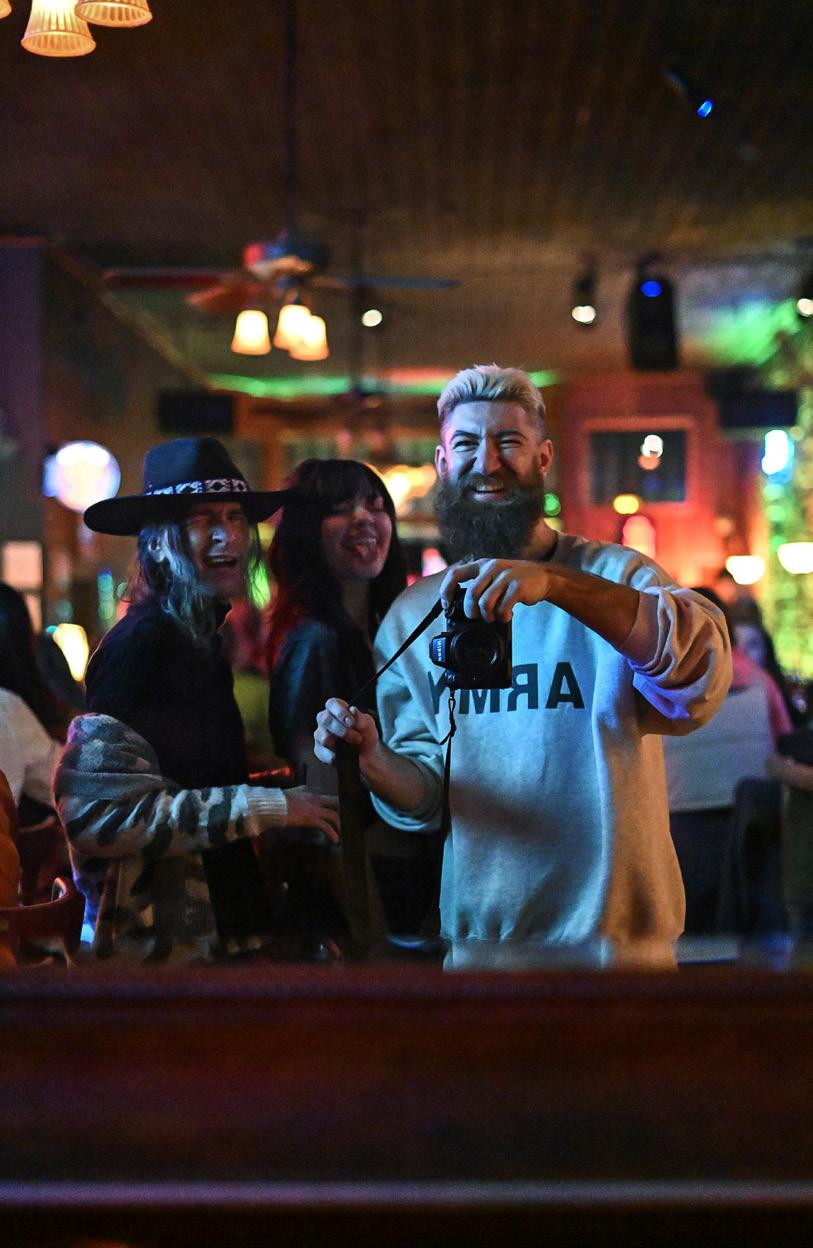


VOL. 10, ISSUE 1: DREAMS • 25

26 • OUR JACKSON HOME
Dreams of My Father
POEM BY JAMES E. CHERRY ILLUSTRATION BY CALLIE WRIGHT
My father looks the same as the day he died. Such is the nature of nocturnal visits. Actually, he looks like the man who dragged eight hour shifts of union dues and assembly lines through the front door at day’s end, frowned at the daily paper, grunted the six o’clock news, whispered grace over supper around a square dinner table. I’m at the head of the table this time. He sits to my left works a plate of cabbage and potatoes, wears the same mask the day I quit the high school basketball team in mid-season, was caught smoking pot in the basement, broke the promise of a college diploma into several pieces. I offer him the roast beef on my plate, but he says nothing, moves away from the table and when I rise to run after him, daybreak catches me around the ankle leaves me sprawled beside the bed to count drops of sunlight spilling from my eyes.
*Dream of My Father appears courtesy Between Chance and Mercy. Willow Books. April, 2024
VOL. 10, ISSUE 1: DREAMS • 27

Sponsor Highlight
Jackson Energy Authority
28 • OUR JACKSON HOME
Many know Jackson Energy Authority as the company who keeps their power on, who they pay their electric bill to, or who powers their favorite streaming services. But JEA is so much more than just the entity who keeps your home running comfortably and properly. It is the people who set it apart.
“It’s neat to see how things are done differently now with advanced high-tech equipment, but the one thing that has been consistent over our history is the people,” Monte Cooper, president and CEO of JEA, said. “You can have the best equipment and the most robust material in the world, but if it’s not installed properly and it’s not maintained by the people, then you don't have anything. So, we’ve done our best to hire exceptionally skilled and bright employees — people who truly care about the consumer and do the right thing every day. Our people are our most important asset and always will be.”
Born out of the previous Jackson Utility Division, JEA became an authority created by a private act of the State of Tennessee in 2001. Unlike many utility companies across the nation, JEA doesn't have shareholders they must return a profit to, but instead, the stakeholders are simply the ratepayers. This means that the ratepayer money stays in Jackson, benefiting the community through investments in local nonprofits and in city and county government. There is a unique balance that JEA tries to maintain: a high
level of service while remaining affordable. As a nonprofit entity, JEA is run by its board of directors made up of five professionals from diverse backgrounds that range from human resources and banking to education and engineering.
Monte is a Jackson native and began his career in the utility industry while studying engineering as a college student. To earn extra money while in school, he began working for Jackson Utility Division as a cooperative engineer while finishing his degree. After graduating from college and working in Memphis for a year, Monte received an offer from Jackson Utility Division for a full-time position as an electric project engineer. Monte has worked at JEA for over 28 years and has seen the exciting growth and transition from JUD to the Jackson Energy Authority we all know today.
“We want to be the choice of our consumer for the right reasons, in that we’re affordable, we’re reliable, we’re the easy button so to speak,” Cooper said.
JEA stands out through its ability to be a “one-stop shop” for everything you could need. It provides electricity, natural gas, propane, water, wastewater, and broadband services.
“We get more positive commentary from our customers who have lived elsewhere and then moved to Jackson. They say, ‘Oh! This is outstanding. We call one number for all our services. Everything is on one bill, and we don’t have to write
VOL. 10, ISSUE 1: DREAMS • 29

separate checks.’ But for the people who have always lived here, it’s just normal,” Cooper added.
JEA has an underground bunker where its state-of-the-art control center is located. This control center is operated by someone 24 hours a day, every day of the year. These operators see any outages that happen and dispatch crews to restore the outage as quickly as possible. No matter if it’s 2 a.m. or Christmas morning, this control center is operating, ensuring that the customers always have what they need. In the utility business, the goal is to make things easy. Conceptually, people could do things on their own. After all, there are other ways to generate power and get water or heat your home. However, JEA wants to offer the convenience of being able to achieve those things without the consumer even thinking about it.
Jackson Energy Authority has been recognized nationally, winning awards in all areas of utilities.
It has been voted best-tasting water in Tennessee and received scores of 100 in sanitary surveys, among many other awards.
“The dream I have for JEA is to maintain being that nationally recognized utility, while at the same time doing everything for the benefit of our local community and our ratepayers,” Cooper said. “Jackson is in a really good period of growth; it’s a healthy growth. We’re looking forward to Jackson Energy Authority expanding our systems to meet increasing demands. We’re in a great spot from a growth perspective. We have the capacity and the ability to expand with the community and continue to provide excellent service to our customers.”
Our Jackson Home is thankful for JEA’s support of our nonprofit so that this journal you’re holding in your hands can be free of cost and tell the stories of those who make Jackson home to us all.
30 • OUR JACKSON HOME

VOL. 10, ISSUE 1: DREAMS • 31
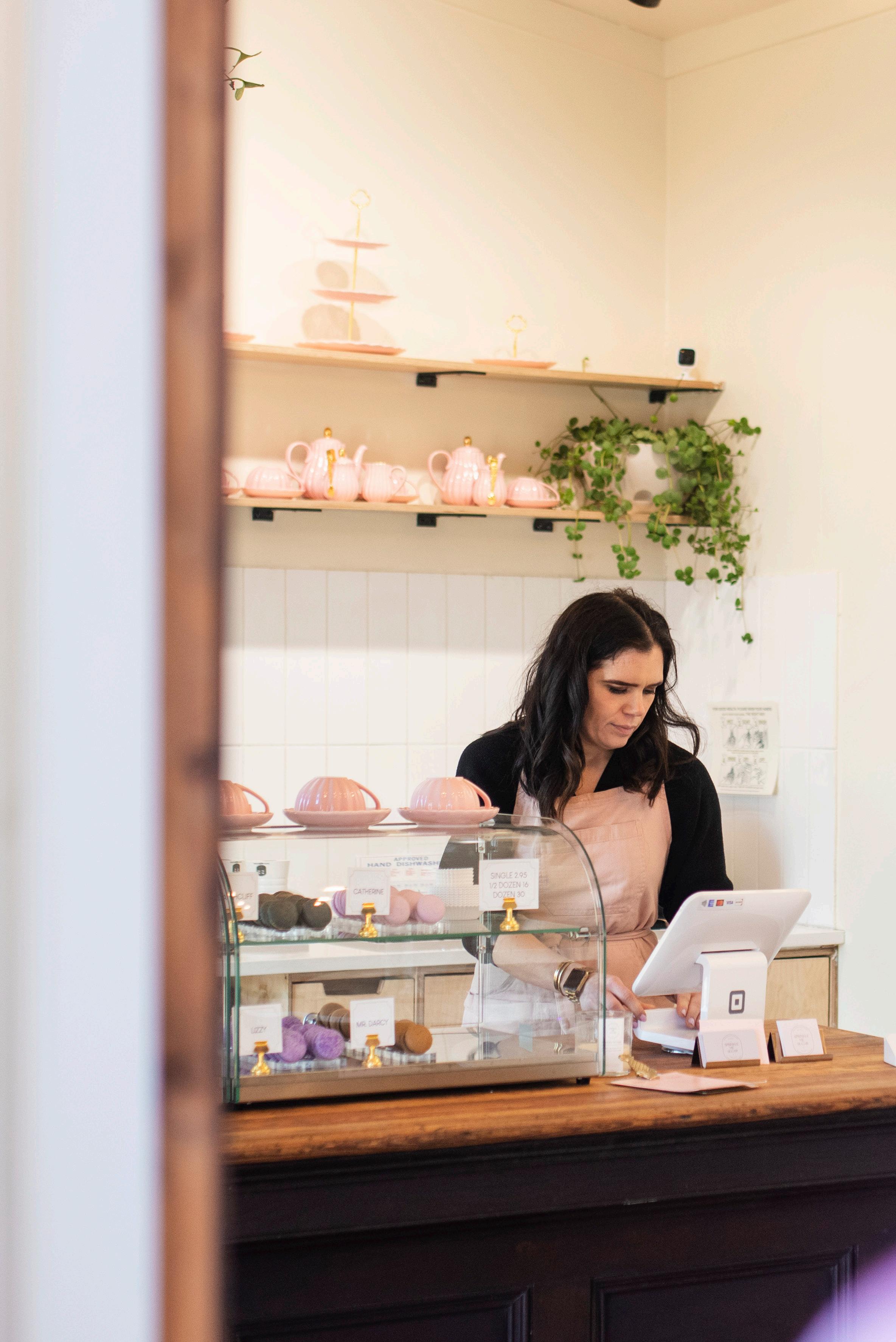
RAINA SHULTS
Propelling Community Through Dreams
PHOTOS
STORY AND
BY MADDIE STEELE
32 • OUR JACKSON HOME
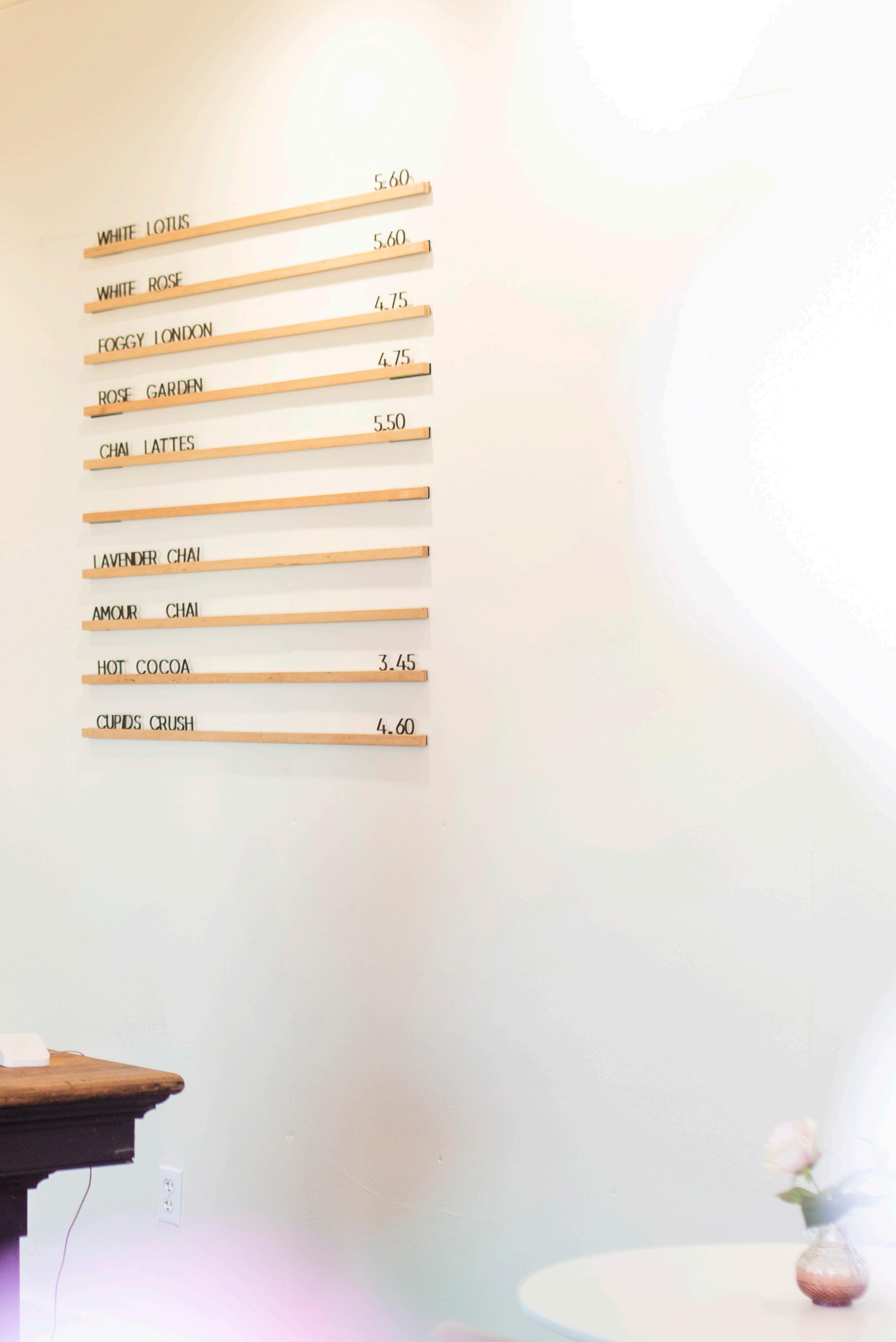
My mom would always call her friends a colorful thread in the tapestry of her life, and she would always tell us the same is true for our friendships. It’s why leaving a certain place you live and invest in is so difficult sometimes. The more you are woven together with people’s lives, the deeper the roots are, the harder it is to uproot. These relationships that make up this tapestry are ultimately what help us get from one place to the next. They might help us get a new job, reach new goals, find a home in a new city; the list could go on. Each thread in the tapestry of my life, whether deeply sown in or just starting to weave its way into the artwork, is a relationship attached to innumerable memories — some good and some bad.
Achieving dreams usually doesn’t happen alone. Even if a dream is solely “mine” to accomplish, it requires connections to propel me forward. The tapestry of life’s relationships propels us toward our dreams.
For Raina Shults, owner of Sprinkle Me Sugar, there are many colorful threads that are interconnected into her story and business of bringing authentic french macarons to her hometown of Jackson, Tennessee.
“For me, it’s always been about my sons. Sprinkle Me Sugar has always been so interconnected with my story of being a mom,” Raina said as I sat in her shop at theLOCAL, watching her set out
her macarons for the day.
Raina’s journey started with a trip to Paris with her husband, Phillip, for their anniversary. It was a transformational trip, altering their lives forever. It was on this trip that they fell in love with French culture, how people would sit and enjoy a cup of tea with a macaron and have a moment with one another. There were no phones, no rushing to get to the next thing. Paris was filled with slow moments of connection.
It was also on this trip that Raina found out she was pregnant, and they would soon discover it was twins — yet another life altering change.
Prior to this trip, Raina had a long, successful career at Nordstrom. During her time at Nordstrom, shortly before they traveled to Paris, she had a very close friend who died suddenly. This shocking reality of the fragility of life made her realize she didn’t want to wait to live her life. This sparked the decision to travel to Paris like she had always dreamed and to start a family. As life progressed in the return from Paris, Raina and Phillip’s twins were born prematurely during a harsh flu season, which led her to the decision to quit her job and stay home with her twin boys. It was their life at stake, and she would do anything for her boys. Postpartum depression quickly hit as her life changed overnight. She went from career-driven to staying home with her babies to keep them safe and well.
VOL. 10, ISSUE 1: DREAMS • 33
As depression crept in rapidly, Raina started to bake, and it quickly became like therapy for her. Soon after learning to bake various treats, she started her business. She would bake anything people asked of her, and if she didn't know how to make it, she would figure it out. “No” was not in her business vocabulary.
“Bringing joy to others and focusing outward really did help me through that really hard time,” Raina said. “To just focus outward, give myself a project where I could contribute.”
During the pandemic, Sprinkle Me Sugar shut down, and she had no intention of bringing it back. But she knew if she ever did bring this business back to life, she would want to focus on one thing: macarons. After a medical diagnosis with Raina’s twins, she and her husband made the decision to move back to Jackson, where she was born and raised, after living in Middle Tennessee for 12 years.
quickly, first with sharing a storefront with Bryce Miller, owner of Earth Borne Goods, to opening her full store at theLOCAL, to expanding her business with a Macaron Vending Machine at Catbird Studios. This growth has happened in less than a year, rapidly creating a business that is now run by Raina and her husband together, and ultimately provides for their family.
“I had always held onto the dream of opening up Sprinkle Me Sugar in Jackson. It just felt like such a far-fetched dream."
“I watched Raina, while sharing a space at theLOCAL together, take her macaron vending machine from an idea to a real place Working through the small details and through the big roadblocks, she figured it out,” Bryce Miller said. “Lots of people have ideas. Not a lot of people execute on those ideas, but she sure did. It was a true honor to work with her and help her vision turn into reality.”
“I had always held on to the dream of opening up Sprinkle Me Sugar in Jackson. It just felt like such a far-fetched dream. I didn't know if we’d ever move back, but I always knew it would be really fun to do something like this in my hometown,” Raina said.
This business has progressed
Raina compared the experience of the past year to the concept of “death ground” for soldiers. This is a situation in which soldiers are forced to fight a battle, with no option of turning around, or else they will die. She and her husband dove headfirst into accomplishing a dream, but dreams aren’t always easy. This dream involves hours of manual labor. Raina’s baking days involve waking up at 3 a.m. and
34 • OUR JACKSON HOME




VOL. 10, ISSUE 1: DREAMS • 35

baking for 10-12 hours straight. It involves her husband handseparating 200-400 eggs every single week. It has required grit and persevering forward even in moments when the dream didn’t feel too “dreamy.”
“It’s more than providing a product or sweet treat; it’s really about providing connection for people,” Raina said.
Not only does Raina’s shop include new and creative flavors each month, but it also includes all kinds of tea selections. The choice to create a tea and macaron shop was one filled with the intention of forcing people to slow down. Tea, unlike coffee, is meant to be enjoyed slowly, savoring each flavor. The same is true for macarons, as they are carefully crafted to showcase each individual flavor in them.
On the opening day of her shop at theLOCAL, she looked out to see a grandmother with her granddaughter enjoying tea and macarons, bridging the generational differences with a slow moment of connection.
“I started crying because this is what I wanted. It’s so much more than just macarons or baking. It’s about moments,” Raina said as she retold this story. “And even with the vending machine, I wanted it to look like a French bakery. I don’t want it to just be about convenience. I want it to also be a moment that’s special, even if it’s quick. This is something that you’re going to share with family and friends and have a moment. Have a moment of connection.”
Each week, young teenage women come up to Raina
36 • OUR JACKSON HOME


“Her aim is to show that a crazy dream is possible—it is attainable, and it inspires other people to do the same thing."
38 • OUR JACKSON HOME

expressing how she is living the dream they have for their own lives. Moms enter the shop and realize Raina is accomplishing what their little girls dream about being when they grow up. Her aim is to show that a crazy dream is possible — it is attainable, and it inspires other people to do the same thing.
“I want women to feel motivated and inspired, and that’s what is exciting. It’s not something that was the original intent of Sprinkle Me Sugar, but having
other people tell me, “Oh, you’re inspiring my daughter,” or having young teenage girls come in who say, “You’re doing my dream,” it just shows how interconnected we all are in the community,” Raina said. “We’re all woven together, and when one of us starts thriving and succeeding, everyone starts thriving and succeeding. Seeing that happen is really humbling. It shows you how you’re just a small piece of a huge tapestry. It fills you with so much joy.”
VOL. 10, ISSUE 1: DREAMS • 39

Grown-Ups,Tomatoes, AndPocketMagicLint
ESSAY BY ERIC ARCHER
PHOTOS BY HANNAH M. GORE
40 • OUR JACKSON HOME
“What do you want to be when you grow up?”
Obviously it’s a question you get asked less and less the older you get — “What is your dream?”
Granted, the older we get, the less interesting the answers generally get. Maybe that’s why people stop asking. Usually when you ask a preschooler what they want to be when they grow up, they don’t respond “an actuary” or “a civil engineer.” It’s usually something more fun (barring it’s the world’s most practical four-year-old — you never know).
I always enjoy reading the answers kids give when asked, “What do you want to be when you grow up?” It’s the kind of fodder they throw on the walls of a daycare in an effort to meet state standards or snatch a smile out of parents after a long day of analyzing complex risks or redesigning city roadways. Usually you can expect the answers to go something like this: A few of them will want to be teachers. (They have not yet learned how poorly society pays those.)
You might get some civil servants in there (policeman, firefighter, Spider-Man, etc.).
You sometimes get the thrill seekers (monster truck driver, roller coaster rider).
There’s a good chance you get a president in there. (Frankly they might be qualified.)
The ones that always make me laugh are the big dreamers. The ones that hit you with something
out of left field. Something like, “When I grow up, I want to be a tomato.” (You always have to be chasing something in life. Might as well dream big.)
There was a point in my life when I stopped dreaming — big, or even much at all. This was a sharp contrast to the ambition bordering on lunacy I embodied through middle and high school. Back then I wanted to be a Hollywood film director — the next Steven Spielberg. I call it a want, but as a teen reclining on the plastic elegance of a high school desk chair, I think I would have called it a know. I knew I would do it.
As I get older, I’ve learned never to demand a destiny out of life. No sooner does the demand leave your mouth than life hits you with a few quick jabs to the gut, and next we meet our protagonist who we find slouching on a couch watching college roll past them, wondering how Spielberg got so lucky anyways (so it goes).
You won't catch me claiming that Spielberg doesn't have luck flowing out of each and every pocket of his blue jeans (even the tiny one inside the front pocket that no one knows the use for). In turn though, I’m not sure you would have caught him lying on a couch wondering why he can't just close his eyes and wake up with a dream come true (touché).
That’s the thing we have yet to tell those preschoolers — how freaking hard is it to keep feeding a
VOL. 10, ISSUE 1: DREAMS • 41

dream when you realize how hard manifesting a dream can be.
“I want to be the president,” they say.
“Let me know when you understand the basics of Keynesian economics,” Life responds.
“I want to test roller coasters,” they say.
“Let's make it past car sickness first,” Life responds.
“I want to be Spider-Man,” they say.
“Maybe at birthday parties,” Life responds, “Maybe at birthday parties.”
“What a meany Life is,” they cry and rush from the room.
Dreams are hard, man. At some point we start to figure that out.
As far as myself, somewhere between lying on the sofa wishing for some of Steven Spielberg’s lucky pocket lint and starting my first big boy job, I’ve begun to realize it’s not quite as simple as I am or am
not Spider-Man (I’m not). I’m no Hollywood director (probably never will be), but I do get paid to make videos for a living. It only happened when I finally got off the couch and started the legwork — and the truth is, I’m living a pretty solid dream as we speak.
You may never hustle hard enough to have the mansion of your dreams overlooking your own personal vineyard, life will do its damndest to make sure of that. But, if you give up now, you’ll never find the little house overlooking a vegetable garden on the way — and that’s a pretty good dream too.
Tell this to the preschooler — you may never be the big dreamer that grows up to be a tomato. But you could grow one in your garden — and that's a pretty good dream too.
(Don't really tell them that. Let ’em have it. They’ll figure it out on their own).
42 • OUR JACKSON HOME

"Tell this to the preschooler— you may never be the big dreamer that grows up to be a tomato. But you could grow one in your garden— and that's a pretty good dream too."

AN UNEXPECTED BELLY LAUGH
Hub City Improv Troupe
STORY BY BETHANY WELBORN
PHOTOS BY CARI GRIFFITH
Maybe you’ve walked by and spotted us rehearsing through the wide-open windows at Turntable Coffee Counter, seen the light spilling onto the shadowed sidewalks outside, or heard the occasional shout of laughter drifting down the mostly deserted downtown streets. Every Tuesday and Thursday evening, the Hub City Improv Troupe circles up on the concrete floor and shakes off the ghosts of our day, determined to laugh despite a hundred reasons not to. We stretch our legs and wring our hands, tune into the shimmering buzz of adrenaline and focused energy. Some of us have been officially doing this for only a month or two; others have honed the craft of improv and comedic performance for years. Some of us are theater nerds and have basked in the applause of hundreds, while some have only ever just practiced unique accents alone in the bathroom mirror whilst washing our hands. (I mean…okay, that one’s possibly just me).
Amy Poehler says that there’s nothing more subjective than what makes someone laugh. Your sense of humor is surprisingly individualized, an amalgam of your previous experiences, formative memories, even traumas. Despite this fact, Poehler also says that there are few other things people feel more strongly about than what they think is funny and what isn’t.
The task of the comedian, then, is one that is essentially doomed to failure: they’re an archer in the dark, lobbing arrow after arrow in hopes of snagging an ever-moving target. There’s no one clear measure of success, no objective declaration of having reached the Epic Pinnacle of Hilarity. The same joke that brought the house down on a Tuesday night may be met with a sea of blank stares and silence on a Thursday
afternoon. There will always be a crowd of naysayers, those who don’t crack a smile, those who critique your style or just don’t think you’re funny. Amy takes the stage anyway.
Though most people initially peg me as an introvert, I’ve always had an outrageous theatrical side as well. My childhood dreams imagined that I’d one day grow up to be 1.) a mailman, 2.) a creative writer, or 3.) a singing actress. (I’m thirty-four and still waiting for that first dream to be delivered.) One of my dad’s favorite stories is when we took a family trip to Colonial Williamsburg, and we stopped to watch a comedic demonstration performed by a few of the living historians. They asked for a volunteer from the audience, and my nine-year-old hand shot up.
Butterflies filled my stomach as I climbed the wooden outdoor stage, but I felt a strange thrill when I realized I could actually do what they asked of me (which was to make dramatically disgusted faces to the audience as I listened to my “older sister” read aloud a letter from her besotted beau). I had two older siblings; I’d trained for this my whole life. I grimaced and frowned, gagged and rolled my eyes, then smoothed my features into a polite nod and smile when the sister character looked my way mid-sentence. The entire bit probably lasted about three minutes, but I was floating on air for the rest of our vacation like I’d swallowed some of Wonka’s Fizzy Lifting Drink and bubbles had now replaced my bones. My parents insisted that I had cracked everyone up (“everyone” basically being our family of five, plus three or four fellow tourists looking for an empty bench on which to rest their bums).
I was a radiant Sally Field: “You like me! You really, really like me!”
VOL. 10, ISSUE 1: DREAMS • 45
Before this, I’d not considered my humor or my antics to be a talent, but rather a bug in the system. I was exhilarated by the possibility that my accents and imitations could actually infuse the world with a little more sparkle, and subtract a little less gloomy predictability. At almost ten years old, I was already inexplicably drawn towards that which is pure, unguarded, and genuine; I can’t think of something more authentic than an unexpected belly laugh. I was hungry to both give and receive those moments of simple, uncomplicated happiness. Turns out, I still am.
When I auditioned for the Hub City Improv Troupe, it was practically a bit in and of itself. While I had participated in a workshop a few months prior and enjoyed it, I didn’t seriously consider auditioning to be an official member; I didn’t consider myself to be cool enough, confident enough, or smart enough. Despite performing in a few small shows in high school and college, I hadn’t found much of a creative outlet since starting our family a decade ago, and I worried that I’d lost my spark for good. I made plans to be out of town the weekend of the auditions, then put it out of my mind.
Fast forward to the morning of auditions, our plans unexpectedly canceled for the day, and my husband asks if I’m going to try out.
I laugh and say, “No, of course not.”
He waits a beat, then uncharacteristically insists, “I really think you should.”
I considered it, surveying my state of mind as it’s been for the past several weeks. I’d been awaiting some worrying medical tests, visiting doctor
after doctor, shuffling referrals to specialists, pulling up my sleeve for yet another blood draw. My nights at home had basically consisted of me sitting around, alternately weeping and staring, contemplating what/ how many terrible illnesses might be spreading through my body at any given moment. My next appointment was still over a month away. My husband gently suggested that maybe I could use a healthy distraction in the meantime. I texted my friend, told her I’m trying out for improv so that I won’t sit around panicking about brain tumors. She texted back: “That’s comedy gold right there.” Joke’s on me — I got in.
We gather twice a week and play game after game, bringing back childhood memories of all those episodes of “Whose Line is it Anyway?”
I watched it in my friend Kristen’s basement because I wasn’t allowed to watch it at home. We learn to say, “Yes, and…” We discover that improv is more about being an intuitive, responsive partner than it is about taking center stage. At the beginning, I imagine that I’m the only one fighting off my demons one punchline at a time, choosing to laugh and limit myself to the present moment rather than succumb to the existential dread that follows me home at night. I know better now, after weeks of showing up for each other; you can’t get ten humans in a room without confronting a hundred terrible worries, a mountain of what-if fears, a thousand legitimate excuses to stay in bed every morning. We step into scene after scene anyway, unwilling to let any one of us go it alone.
As Mary Oliver says, “There are plenty of lives and whole towns destroyed or about to be. We are not
46 • OUR JACKSON HOME
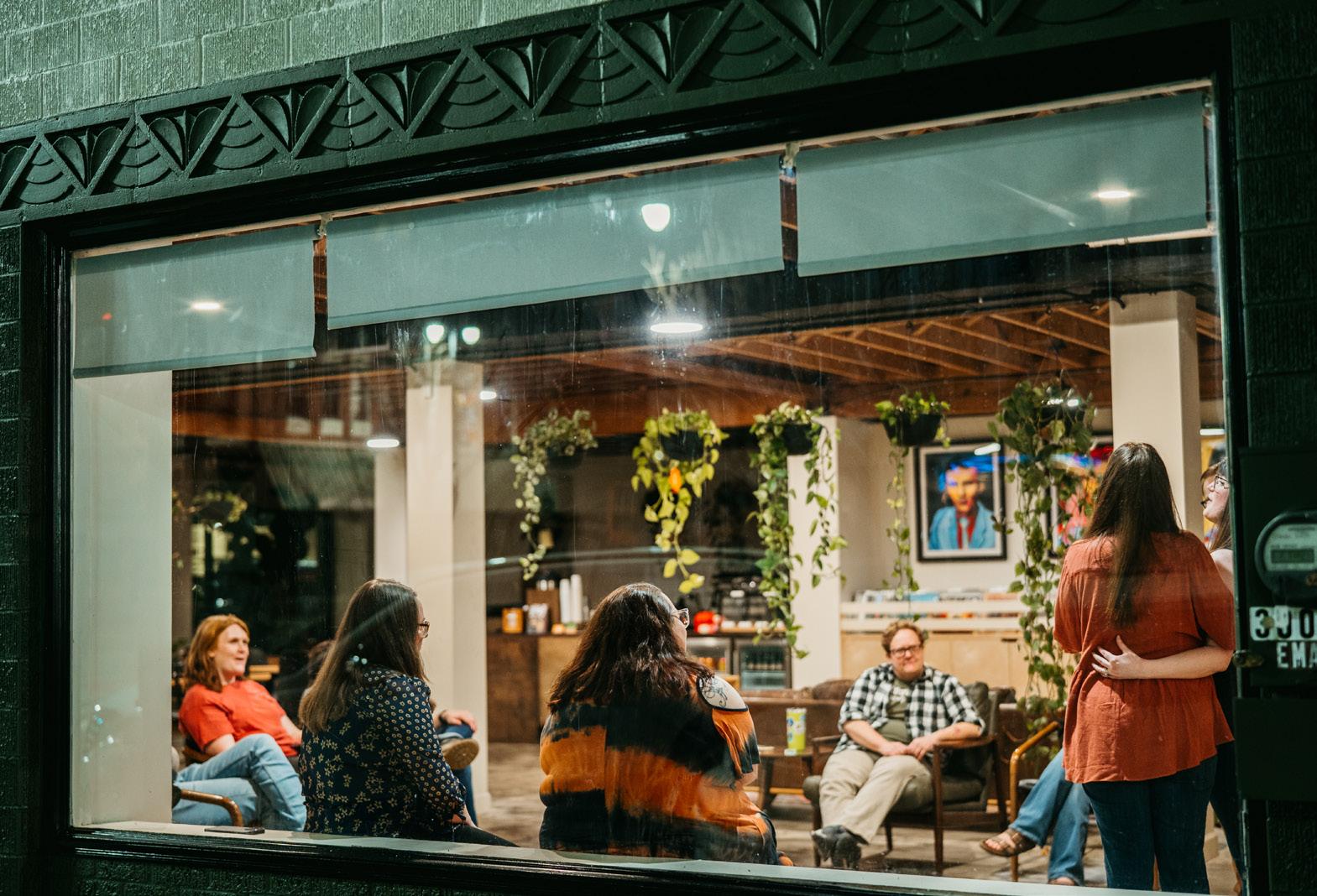

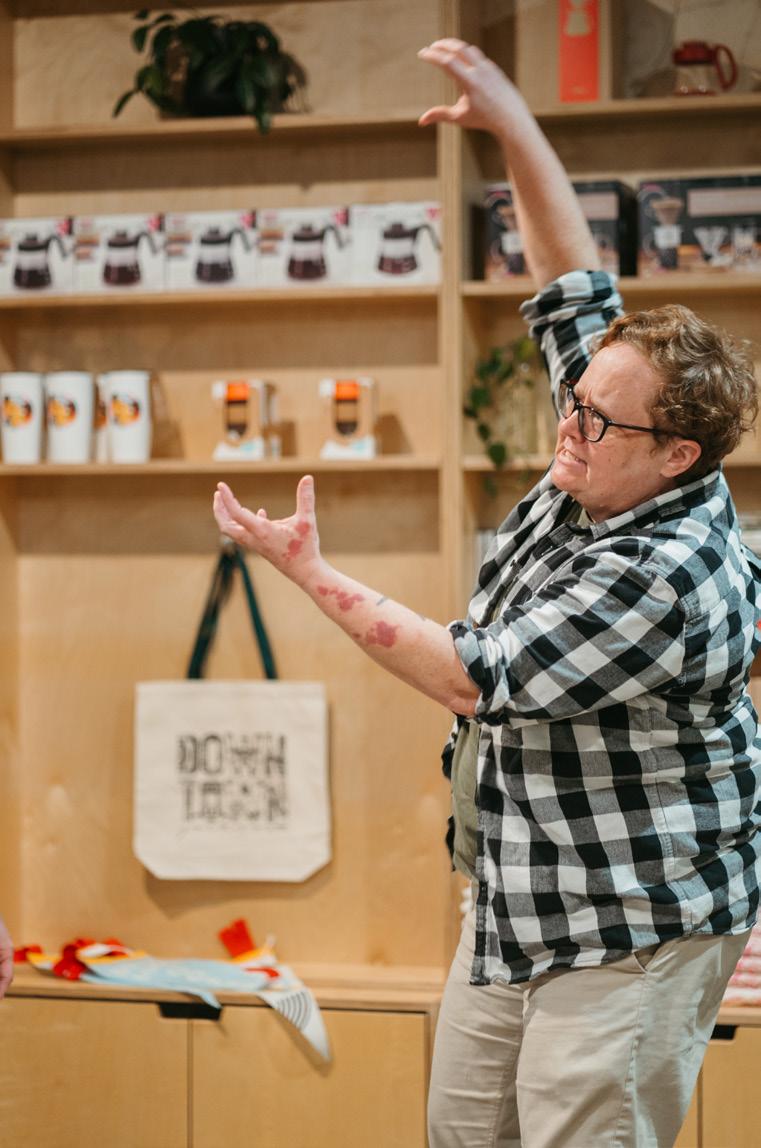
VOL. 10, ISSUE 1: DREAMS • 47

wise, and not very often kind…Still, life has some possibility left. [...] Sometimes something happens better than all the riches or power in the world…whatever it is, don’t be afraid of its plenty. Joy is not made to be a crumb.”
We get together to tell jokes and try on different personas, fashioning alternate realities from a prompt and a prayer. We each bring our crumbs and find before us a feast.
I told my family I’m in an improv group, and my stepmother replied, “Oh my gosh, Bethany, you’re so brave!” It doesn’t feel brave as much as it feels like a holy rebellion, a steady reaching back in time toward the shimmering joy I felt in Williamsburg when I was nine. As an adult, there’s surprising power in reconnecting with the things that lit you up as a kid, especially after you thought the expiration date for such things had already passed. You might assume that
a group of amateur improv comedians are just a bunch of screwballs, shallow as a puddle and allergic to the darker side of life. In truth, however, I’ve found partners in hope.
Wendell Berry advises us, “Be joyful, though you have considered all the facts,” and I’ve happened upon a goofy, lovely little group who do just that. That’s a not-so-tiny miracle, in this economy. Jackson, as it frequently has over the last fifteen years, has surprised me again and welcomed me into this communal project where we all agree to join hands (sometimes literally) and offer our very flawed, deeply delightful selves on the altars of letting go and leaning in. We, the collective, are drawing back the arrow and releasing it into a space we can’t see or touch or taste, but we trust that the launching itself matters more than where it lands.
JACKSON PRINTER LOCAL 48 • OUR JACKSON HOME
JACKSON’S PRINTER LOCAL ONE OF TENNESSEE INDUSTRIAL PRINTING, INC. 51 MILLER AVENUE • JACKSON,TN 731.668.3500 • tipsprints.com WEST TENNESSEE’S MOST TECHNOLOGICALLY ADVANCED PRINTER Over the past few years we have invested in printing solutions that will increase: All to meet our customer’s needs now and in the future. PRODUCTIVITY EFFICIENCY CAPACITY QUALITY

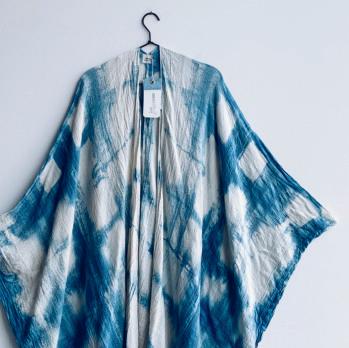



Let's Pick the Perfect Gift
The Garner Blue Shop is home to its namesake line of indigo accessories as well as unique handcrafted gifts mindfully made by artists, makers and indie brands we believe in (more than 150 currently!). Some made right here in Jackson, others curated from the whole U.S.A.
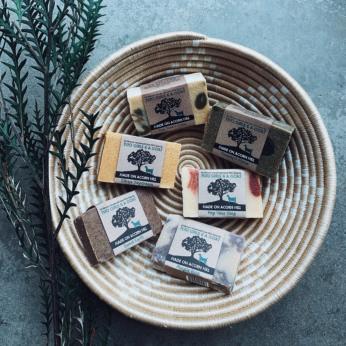
 7 JACKSON WALK PLAZA | WWW.GARNERBLUE.COM
7 JACKSON WALK PLAZA | WWW.GARNERBLUE.COM
50 • OUR JACKSON HOME

The Dream Center
RESTORING WOMEN'S DREAMS
STORY BY LIZZIE EMMONS
PHOTOS BY DANA MANN
VOL. 10, ISSUE 1: DREAMS • 51
Tucked away from the usual hustle of North Jackson traffic on Oil Well Road, at the end of a freshly paved driveway, is a newly constructed building that the nonprofit organization, the Dream Center, and its residents now call home. As I followed my GPS into the parking lot, I was shocked that I hadn’t noticed the large building in plain sight on a road that I frequent. It’s surprising how much important work is done for our community behind closed doors in hidden buildings that we all drive by daily.
The Dream Center provides shelter for dozens of women and women with children. Their newly constructed building opened at the end of last year and has the ability to host up to 90 occupants with all amenities that they may need for a long stay.
Long before dreaming up the newly constructed space and helping women build the lives of their dreams, the Dream Center began as an immediate reaction to an F4 tornado that destroyed many areas of Jackson and caused families and individuals to be left without a home. The group was given an old, vacant hospital for sheltering those who were left unhoused. However, once displaced people were able to return to homes after reconstruction, there remained a significant need to continue supporting unhoused people in the region. The Dream Center filled this need by keeping the doors of the old hospital open, eventually
relocating to individual houses donated by local contractors, and now to their brand new facility on Oil Well Road.
Robin Apelgren, assistant director, met me at the entrance of the new building to give me a full tour of the space, but not before front desk volunteers Hazel and Sheila greeted me with large smiles and shared their stories of why they were working at the space. Like many of the volunteers, Sheila was a former resident of the Dream Center who was there to give back and help other women rebuild their lives, just like she was able to do years ago.
Robin Apelgren began as a volunteer at the Dream Center, new to the community and looking for a way to get involved. She began by simply answering the phone and looking after babies while their mothers were in classes.
“As I saw the changes in the lives of the women at the Dream Center, I knew it was something that I wanted to be a part of,” she told me.
Robin led me through a tour of the new building. The space still has that new construction feel — a coat of fresh, crisp paint on every wall, echoing sounds of footsteps resonating through empty halls with bright light fixtures, and sunlight streaming through the clean windows in every room. In addition to showing me the bedroom areas, Robin led me through a workout space, an art studio, a free clothing
52 • OUR JACKSON HOME

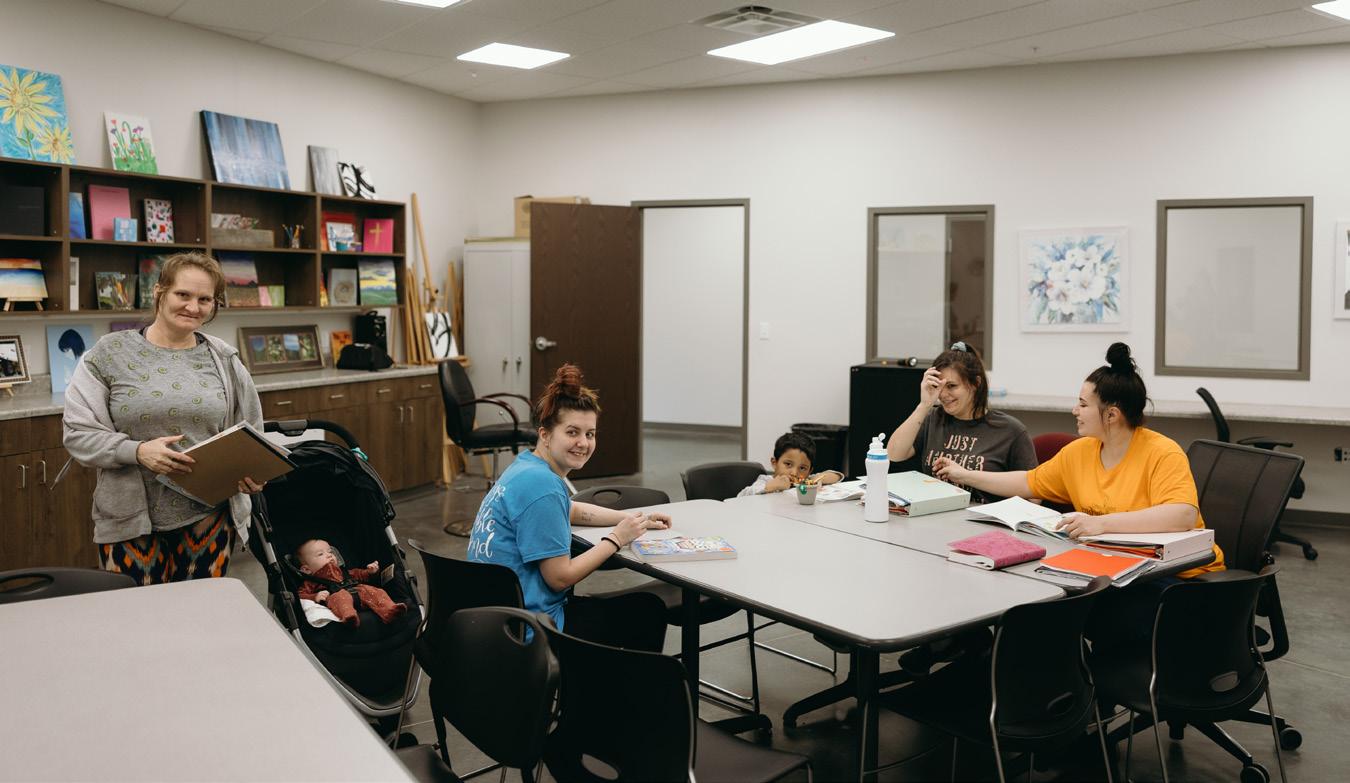

VOL. 10, ISSUE 1: DREAMS • 53
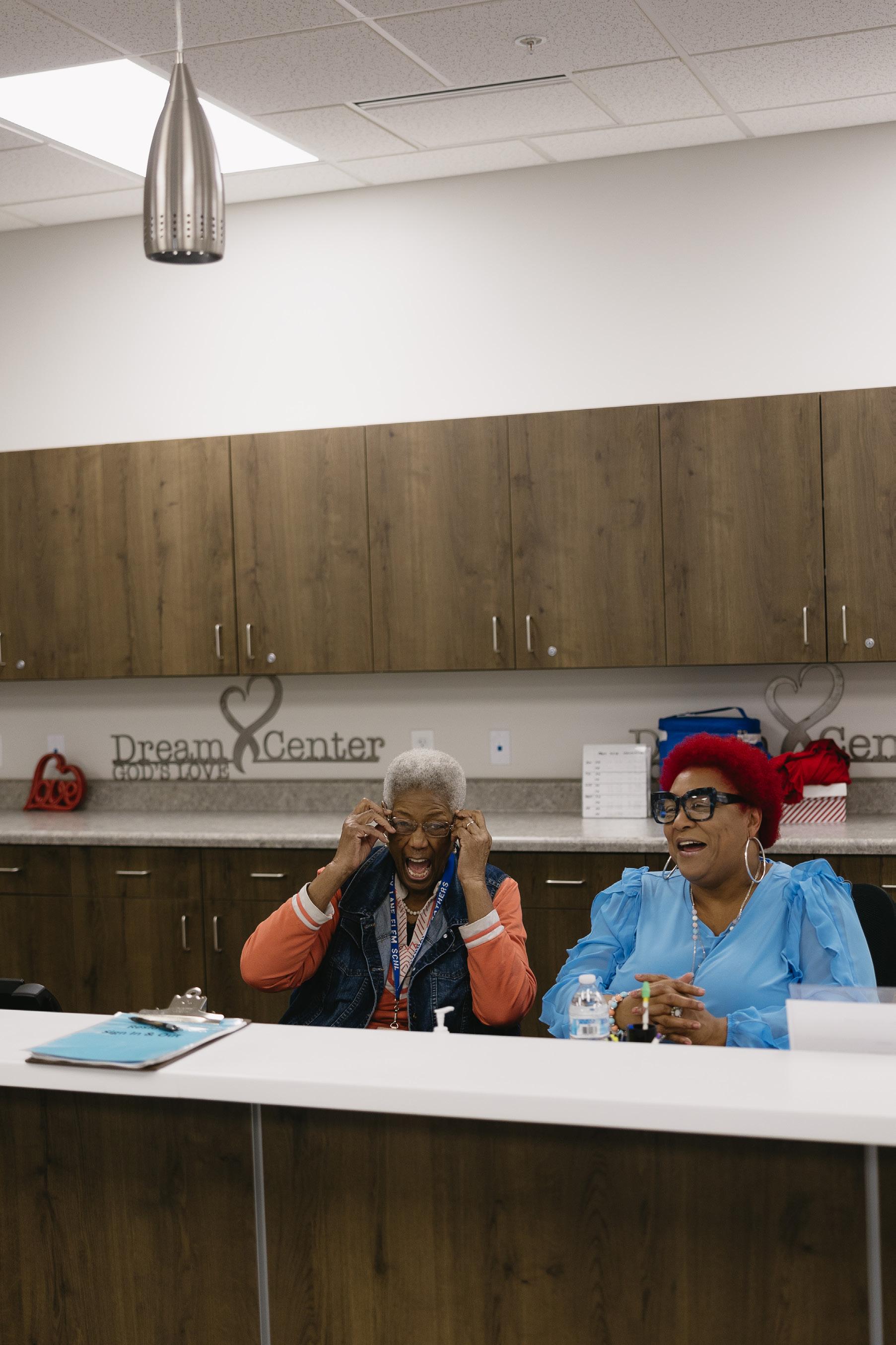
54 • OUR JACKSON HOME

closet, a library, a cafeteria and common area, a large kitchen, a play room, and a laundry space, all available for the women and children to use during their stay.
All women who find themselves at the Dream Center have experienced forms of crisis and/or loss. From June 2022 through July 2023, the organization served 315 clients from the West Tennessee area, with 100% of clients being at or below poverty level and 92% of women served having previously experienced abuse.
What began as simply filling a housing need has now turned into a robust faith-based program to assist women in achieving any of their dreams and turning their lives around. Today, the Dream Center assists women with job readiness, resume building, finding gainful employment, and any other service that will prepare the women to
achieve success.
“It’s such a turning point for the women when they realize that they can move forward and not make the same decision again,” Robin said.
The organization relies heavily on local volunteers to give their time and talents to support the programs for the women and children at the facility, as well as connecting women to other local resources that can be of assistance to each of their specific circumstances.
The ultimate goal of the organization is to help women rebuild their lives, restore their hopes, and renew their dreams. Day after day, Robin sees this happen firsthand. “To see them slowly blossom into a different person, and to realize that they can leave everything behind and be the person that they want to be — it’s just tremendous.”
VOL. 10, ISSUE 1: DREAMS • 55

56 • OUR JACKSON HOME
A New American Dream
STORY BY ANNA ESQUIVEL PHOTOS BY HANNAH M. GORE
The American Dream is a national narrative that has been retold and repurposed for more than 100 years, often as a way of keeping hope in a difficult world. The original narrative promised prosperity, liberty, and civic agency — the very ideals enshrined in our founding documents — for everyone, equally. Over the years, the American Dream has come to be synonymous with a striving for individual wealth and the promise of upward mobility. What freedom and civic engagement have to do with prosperity often gets forgotten. Sometimes, though, it happens that you hear an old story again, this time from a different storyteller. Held in Jackson since 2014, the Jackson International Food and Art Festival is weaving its own version of the story. When the festival organizers met recently to plan for our 10-year anniversary celebration, we talked about our dreams for the next 10 years of the festival. All of our answers shared common, and familiar, themes: that freedom is interdependent, that what makes us different can help us prosper, and that community
resources should be available to all of us who call Jackson home.
The reality of being “The Hub City” is that sometimes people who stop over stay over. After a while, their dreams, ideas, and values become woven into the fabric of the region. Their differences are included.
When he was still new to Jackson, Eduardo Morales had trouble finding community and accessing services that he needed to make the transition from California (and before that, his home town of El Bañadero, Jalisco, Mexico) a successful one. He reached out to the mayor’s office for help. Not long after that connection was made, the city reached back out to him in the hopes that he could help with a new cultural exchange initiative, a way for the international community to share their cultures. With the help of co-chair Dr. Sandra Dee, who had already been working with the West Tennessee Fil-Am Association to share the rich Filipino culture that flourished in the city, they had an idea for a festival that would showcase the diversity of cultures in West Tennessee, and to provide
VOL. 10, ISSUE 1: DREAMS • 57
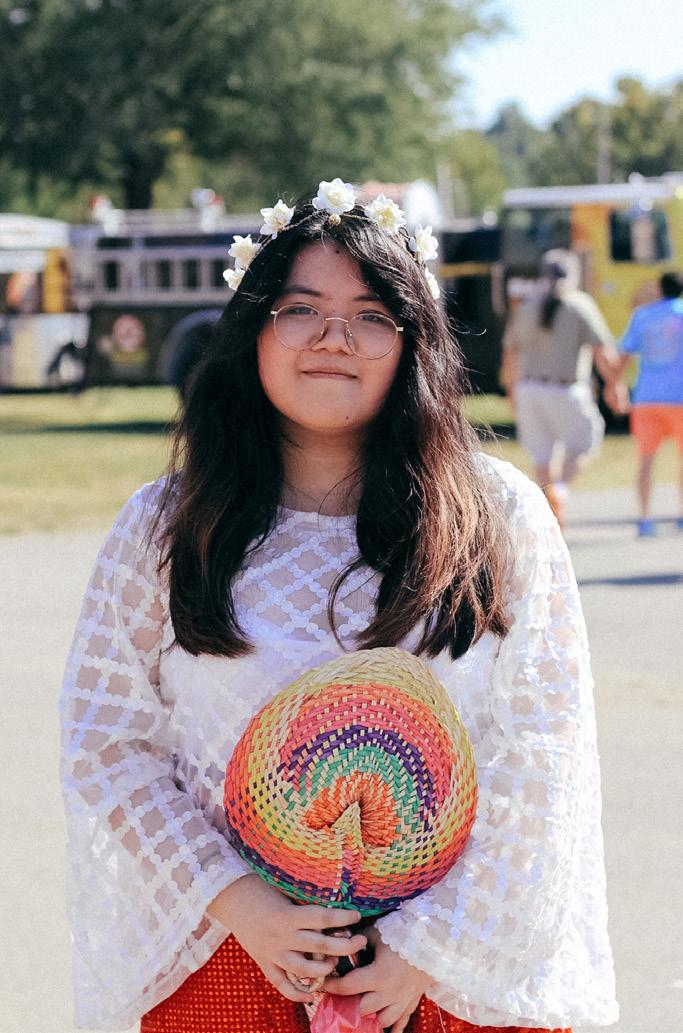
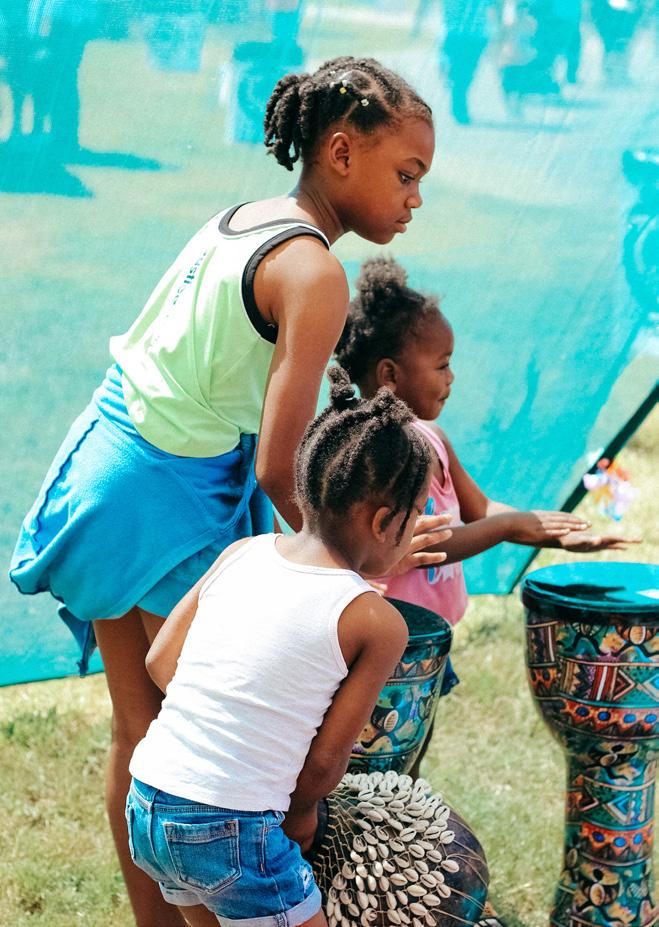

for others what Morales had to find on his own: a way for new West Tennesseans to connect to city services and local resources that might not seem easily accessible to them.
The core group of festival planners is a microcosm of the cultural diversity that the festival highlights. We are life-long Jacksonians, life-long Southerners new to West Tennessee, Californians, Northerners, and foreign-born citizens who call West Tennessee home. Artist Wanda Stanfill cultivated her artistic passions and soothing Southern drawl right here in Jackson, where

she has lived her whole life. Her early experiences with teachers who challenged her to think of herself as a global citizen continue to inspire her art and her public service work. Recognizable from her work with United Way, Pat Ross has worked in a number of industries around Jackson, having been brought up here. Each job she has held has the common thread of connecting people with other people and resources, which she believes is fundamental to individual and communal prosperity.
Vinay Sood, born in Missouri to Indian parents, has never met a stranger. His success as a salesman
58 • OUR JACKSON HOME
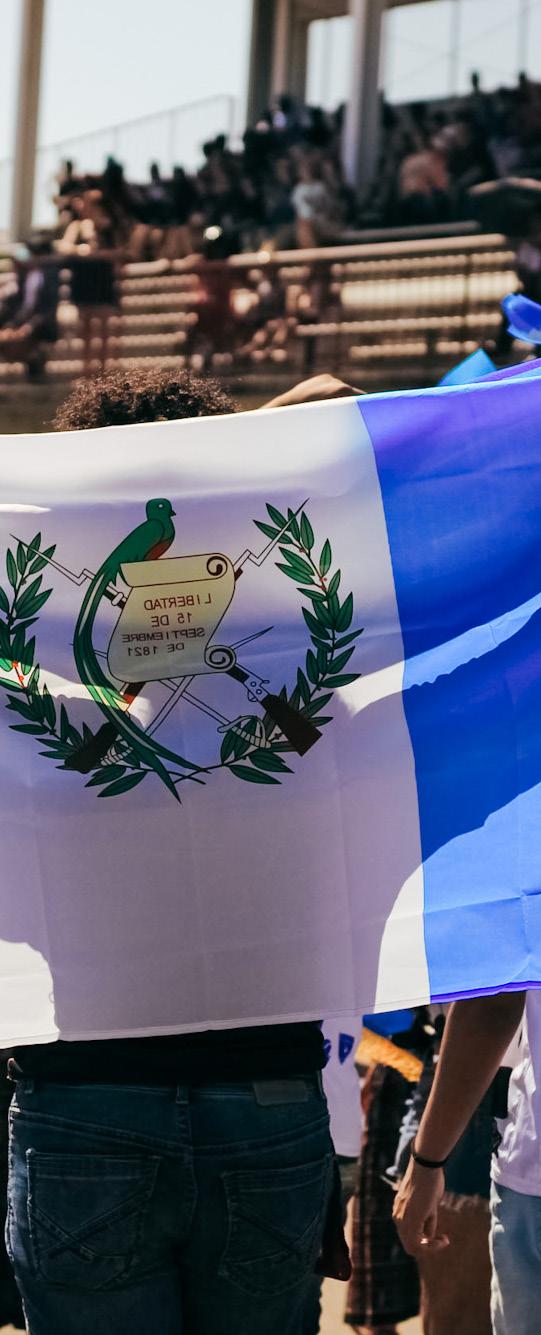


can be attributed to his sincere interest and investment in every person he meets. Mississippi-born Jean Marie Walls is the epitome of the global citizen. Having lived and traveled abroad, she found a home in West Tennessee, teaching French and intercultural communication to university students. Ronnie Goff, a self-proclaimed “Navy Brat,” has lived in more countries than most people can name. She found a home, and her Jackson-born husband, in West Tennessee, where her roots are growing deep.
And then there’s me, with a half-Mexican father from California and a small-town
Arkansan mother. My interest in migration patterns of people and culture was sparked by childhood trips out west, hearing vagabond uncles and a world-traveling father tell stories that captured my imagination. The JIFAF Executive Committee is a small group, united by our differences, led by two long-time, foreign-born Jacksonians on a mission to provide for the community a new version of prosperity and civic engagement.
The committee’s dream for the festival had always been to grow bigger each year. During my first planning meeting four years ago, the question of whether we were
VOL. 10, ISSUE 1: DREAMS • 59
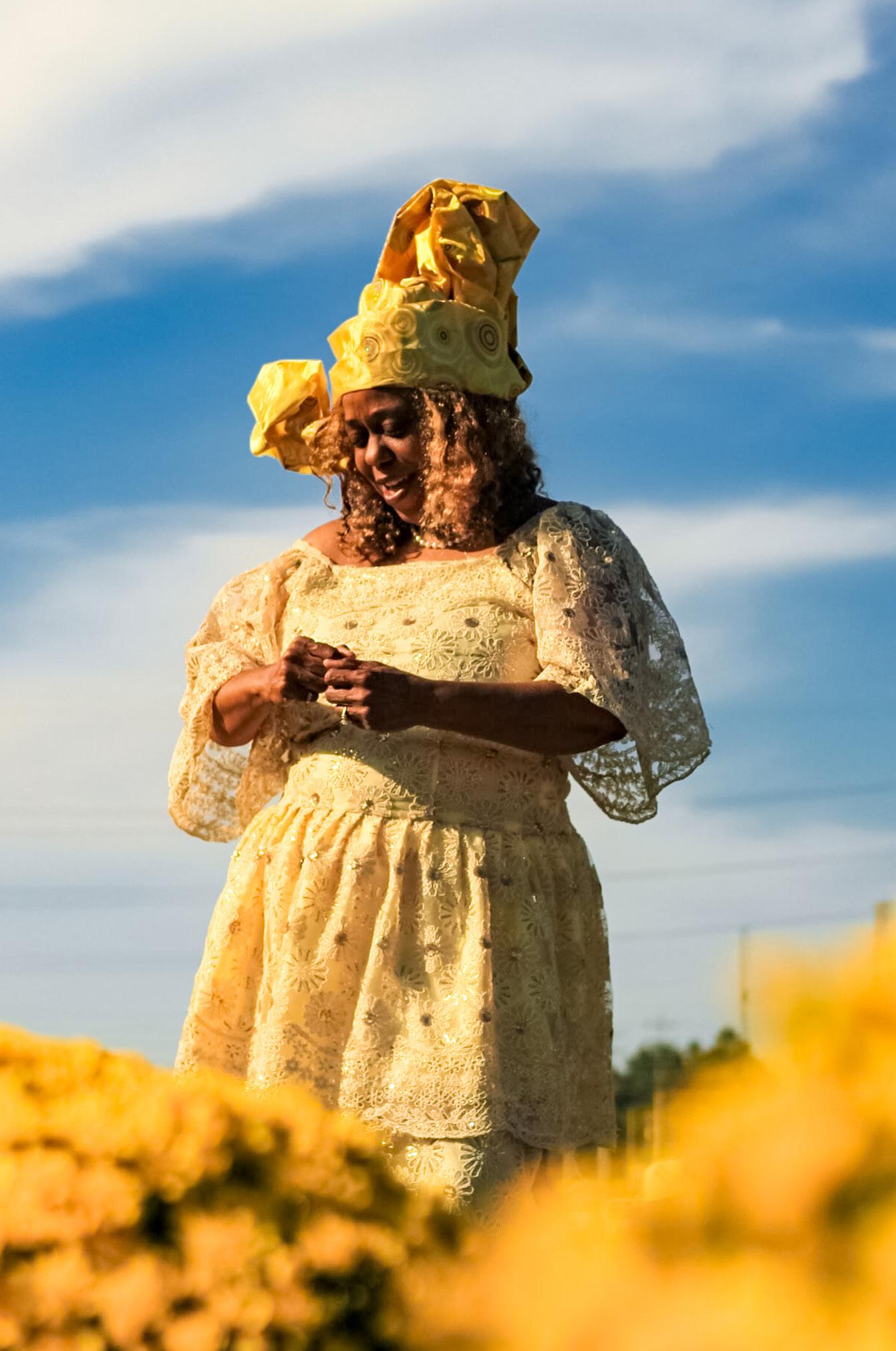
60 • OUR JACKSON HOME
outgrowing the downtown location was raised. By then, attendance had already quadrupled since that inaugural festival in 2014. Now, more vendors were interested in having booths, more cultures and organizations wanted to participate, and more performers were asking about stage time. It was made clear in that meeting that downtown Jackson for the site of the festival was non-negotiable. To Morales and Dee, the symbolism of posting the flags of each represented nation in front of city hall was essential to our mission. The festival was a way for both native West Tennesseans and their international neighbors to connect with city and county services, and for them to know that those services were available to everyone, equally.
It had become a familiar scene: across from city hall where, on the main festival stage, the city and county mayors made proclamations about cultural solidarity, local artists and college students helped children with globally-themed art projects. Nearby, members of the fire department watched children play while their older siblings pawed shyly at brochures being distributed by Army recruiters. County and city police educated festival goers about ways to keep their communities safe, and local churches touted their probono services for new immigrants. Very rarely have I participated in an event in which each small, meaningful interaction was a visual manifestation of its vision. When
the festival was forced to move to the Jackson Fairgrounds, we grieved with the community.
We couldn’t have been more proud of our growth. The festival helped us to realize a dream of increased diversity and access to services and resources for even more of our citizens. Nevertheless, we were deeply anxious about what might be lost in the move from downtown to the Jackson Fairgrounds. Would those connections to city services be made as clear to the city’s residents? Would we lose the unity and collaboration that was fostered by the intimacy of the downtown location? Would people even come? Walking through the fairgrounds arena ahead of the festival, we could still see remnants of the county fair that had preceded us. The pavilion on the north end of the arena still had straw that had softened the ground for livestock. I wondered how we would reconcile in the minds of attendees the nostalgic Americana vibes of the West Tennessee State Fair with the Parade of Cultures that would march across those same grounds the following weekend.
When festival day arrived and with the fresh perspective of a new location, I saw something taking shape that both honored the old vision of the festival and presented a new version of the festival planners’ dream in ways that I had not anticipated. That day, more than twenty thousand West Tennesseans had an opportunity to connect with
VOL. 10, ISSUE 1: DREAMS • 61
their neighbors, area resources, and homegrown goods and services.
Artists’ Row greeted festival goers as soon as they came in the exhibit hall doors. On one side of the room, one stunning painting by local artist Rose Newhouse stood out to me: a half-length portrait of a woman on black canvas drenched in orange, turquoise, gold, and red. Her long locs in the same splashes of color flowed behind her long silver earrings and a heavy gold necklace. In a booth directly behind her sat a near-life-sized bust of a woman, also adorned with long thick locs, expertly sculpted by Ghanaian artist Kumi Samuel. Around the corner, another local artist, Frank Jones, displayed his wooden art pieces adorned with American flags, Veteran symbols, cowboys, and idyllic southern landscapes. Outside of the exhibit hall where a world’s worth of food drew hungry crowds, an immigrant family cooked traditional Turkish food, and across the way a local food truck served the American standards: hot dogs and key lime pie. At the other end of the festival, you could see a demonstration by local woodturners while you were waiting for your turn to get a Henna tattoo.
and differences among us were on full, glorious display, so was a new American Dream that promised that hard work would be rewarded, opportunity would be provided to those who would take it, and prosperity would follow both for the individual and the community they served. Each vendor at the festival, whether locally raised or newly located, shared with festival participants the product of their own imagination and labor. Here was the epiphany: the exchange of cultures was bidirectional.
"The Jackson Internatonal Food and Art Festival showed me that I could find the world on display right here in Jackson."
Curious West Tennesseans learned as much about Bollywood as enterprising Trinidadians learned about locally-dyed macramé yarn.
A walk through the fairgrounds showed me that while the diversity
I used to think, as my friend (and brilliant author of the photos you see here) Hannah Gore explained, “If I wanted to experience culture, I had to go somewhere else.” The Jackson International Food and Art Festival showed me that I could find the world on display right here in Jackson. When culture is created and consumed by the very folks who live together, who share their lives with each other every day, whose politics and livelihoods are interconnected, we author the sincerest and purest version of the American Dream.
62 • OUR JACKSON HOME



VOL. 10, ISSUE 1: DREAMS • 63
MEET
our TEAM
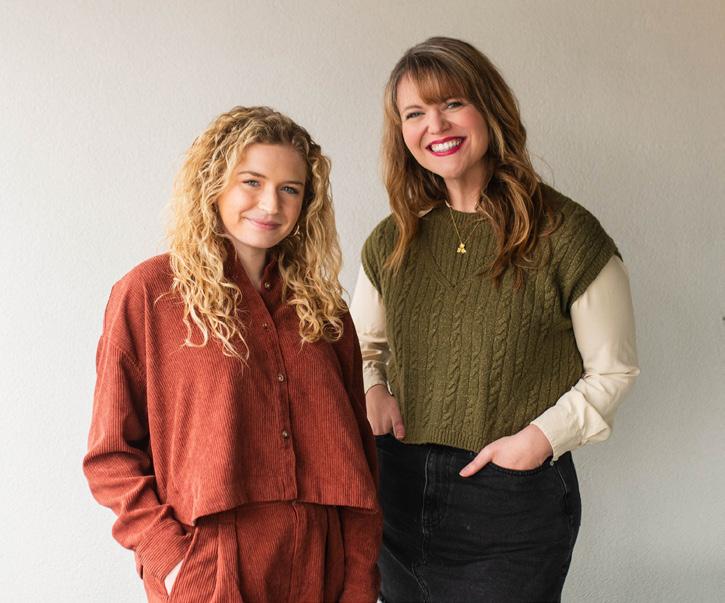
Our Jackson Home celebrates and shares the voices of our neighbors through storytelling, public art, and community events to highlight the city we all love: Jackson, Tennessee.
Our Jackson Home is a project of theCO, and is a non-profit organization run by our Program Director and Editor-in-Chief with the support of theCO staff, and made possible by the work of local contributors.
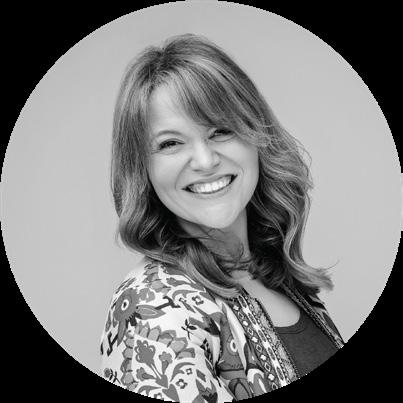

LIZZIE EMMONS is the Program Director of Our Jackson Home. She is a passionate advocate for the arts and culture sector with experience in arts and nonprofit administration, event coordination, graphic design, education, therapy, music performance and visual arts. She is the previous Executive Director of the Jackson Arts Council and currently serves on the Board of Directors for ArtsEd Tennessee as the Board Secretary. Lizzie has a Bachelor of Arts in Music and a Master of Science in Education, both from the University of Tennessee at Martin, and a certificate in Arts Management from the University of Massachusetts Amherst.
MADDIE STEELE serves as Editor-in-Chief of Our Jackson Home and Communications Manager at theCO. She is a writer and photographer who loves telling real and authentic stories from behind the camera or on the page. Maddie has a Bachelor of Arts degree in journalism with a minor in photojournalism from Union University and also owns her wedding and portrait photography business, which allows her to capture love stories across the country. In her spare time, she loves spending time with her fiance, Zach, hosting people, traveling, and baking cakes.
64 • OUR JACKSON HOME

300 EAST MAIN ST | DOWNTOWN JACKSON Brewing Community. M-F | 7AM-5PM SA |8AM-5PM NOW OPEN SUNDAYS 8AM-2PM VOL. 10, ISSUE 1: DREAMS • 65
IN THIS ISSUE Contributors
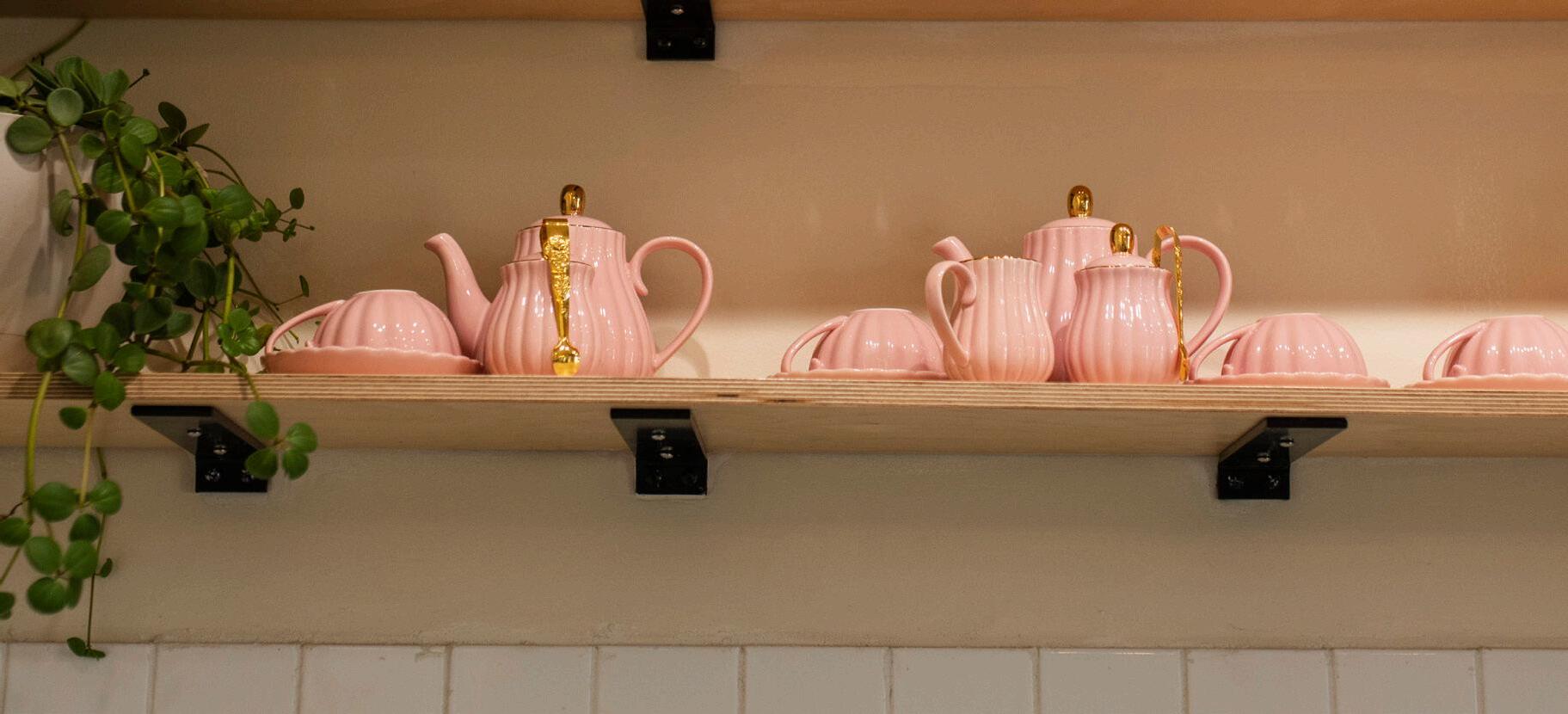
ERIC ARCHER is a writer, videographer, and Jackson TN native. Per aforementioned career titles he enjoys writing, making videos, and telling stories in exciting and compelling ways. When Eric isn't writing or making videos he is spending time with his son Emerson — more than likely rewatching Ducktales for the millionth time.
TRUNETTA ATWATER is Owner of Trunetta Atwater photography and Founder of Soul Collective. Trunetta is a photographer, coach, and truth-teller. She specializes in challenging entrepreneurs to bring their creative ideas to life through photos. Her philosophy is to empower creatives to be fearless in their businesses, to be real with their audiences, and to maximize opportunities to promote their products and services. She believes creative businesses thrive as a tribe and it's her passion to lead entrepreneurs to their full potential through expressive photography.
MIRZA BABIC is a multi-talented creative, adept at weaving captivating narratives through both visual and written forms of expression. With a foundation in photography and content creation, Mirza brings stories to life with a keen eye for detail and a flair for engaging storytelling. Beyond the lens, Mirza's versatility extends to music, where a passion for music production and a commitment to excellence shine
through. Mirza is dedicated to crafting compelling narratives and immersive experiences that leave a lasting impact.
JAMES E. CHERRY is the author of seven books, a collection of short fiction, two novels, and four volumes of poetry. His latest collection of poetry, Between Chance and Mercy, is forthcoming in April 2024 from Aquarius Press/Willow Books. His prose and poetry have been featured in numerous journals and anthologies both in the U.S. as well as in England, France, China, Canada and Nigeria. Cherry has been nominated for an NAACP Image Award, a Lillian Smith Book Award and was a finalist for the Next Generation Indie Book Award for Fiction. President of The Griot Collective and founder of The Jazz Foundation of West Tennessee, he lives in Jackson with his wife, Tammy.
ANNA ESQUIVEL is a professor, traveler, and amateur gardener. She's been teaching writing and literature for almost twenty years and is deeply committed to helping folks navigate the creative process. She directs study abroad programs in Europe and has facilitated writing retreats in Mexico and France. She is a member of the Jackson International Food and Art Festival Executive Committee and enjoys fostering cultural connections both locally and internationally.
66 • OUR JACKSON HOME
HANNAH GORE is a photographer, writer, and artist from Jackson, Tennessee, who currently lives in the nearby town of Medina. She seeks to capture the heart and soul of Jackson through authentic storytelling in both visual and written form. Hannah currently owns her own photography business and specializes in live music, event, and portrait photography.
CARI GRIFFITH is a gardener and a photographer with a lifelong affection for seed sowing and storytelling. She lives a very sweet life in midtown with her husband Rob. She spends most of her time behind a computer or a camera, and her most treasured moments are eating dinner with her friends both near and far.
GABE HART teaches 11th grade Englist Language Arts at Jackson Central-Merry High School. A lifelong Jacksonian, Gabe is a product of the Jackson- Madison County School System and has taught English in JMCSS for fourteen years. Along with contributing to Our Jackson Home, Gabe also writes monthly columns for Tennessee Lookout, weekly columns and a podcast for Newstalk 96.5, and has been published in The Tennessean. When he's not in Jackson, he's most likely traveling with his partner, Laura, or spending time with her in her hometown of Philadelphia.
TRISTA HAVNER is a born and raised Jackson girl, a mom, wife, and small business owner. She and her husband, Charlie, have a charming local family business and are passionate about the history there. Trista can be found putting together frames in her family’s shop or lettering anything that will hold still. Her love for home grows daily, and she is passionate about being an agent of growth and positive change in her beloved Hub City
.
ESTHER JONES is Maryland native who moved to Jackson in 2019 to complete
her English degree at Union University. She lives with her husband, Wesley, and their dog, Otis. Her favorite things are contemporary fiction novels and Pinterest vision boards, and she doesn't know what she would do without em dashes.
LILY K. LEWIS is a senior at Madison Academic, and she recently published her first book, “Everlasting Light.” When Lily isn’t at theater rehearsal, you’ll find her drinking coffee, writing, or baking something with chocolate. Lily believes that writing is a form of connection and always tries to embody that in her work.
DANA MANN is a photographer from Jackson, Tennessee who loves telling stories. Specializing in weddings, families, and people, Dana enjoys capturing the authenticity of the moment.
BETHANY WELBORN has lived in Jackson for the past fourteen years in the mid-town home she shares with her husband and two children. She practices her accents on her dog, Sebastian, who generously wags his tail at all her jokes. Bethany often stays up too late reading her (overdue) library book, frequently says she’s going to “run errands” so she can go shop at City Thrift, usually laughs too loudly in public places, and always wishes it could be summertime. She works part-time as an intake coordinator for a local mental health counseling office, and is also a full-time homeschool teacher. You can follow her writing on Substack at Ever Discerning.
CALLIE WRIGHT is an artist originally from Louisville, Kentucky, who has found herself calling Jackson home for almost 7 years. She specializes in celebrating simple, subtle beauty in far-too-often overlooked people and places. In addition to artmaking, she is also a local social worker, and this unites for her in her fascination with and love for people, and desire to bring joy and hope through art.
VOL. 10, ISSUE 1: DREAMS • 67





















































 7 JACKSON WALK PLAZA | WWW.GARNERBLUE.COM
7 JACKSON WALK PLAZA | WWW.GARNERBLUE.COM
























